Inbox and environment news : Issue 599
September 17 - October 7, 2023: Issue 599
School Holidays Break
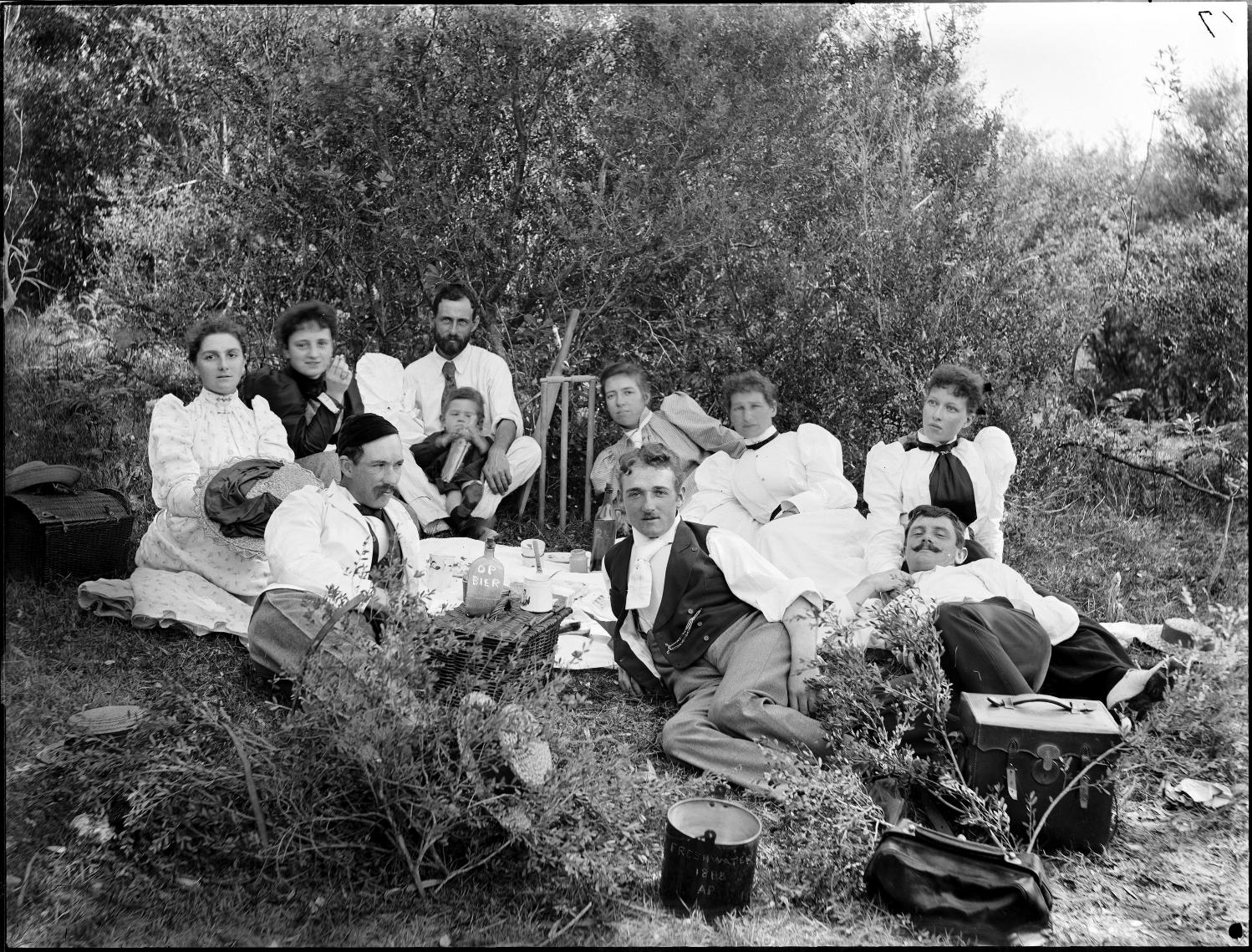
Kitchener Park Lighting Upgrades Completed
Eight Sailors Selected For 2023 Pacific Games In Solomon Islands Including Evie Saunders

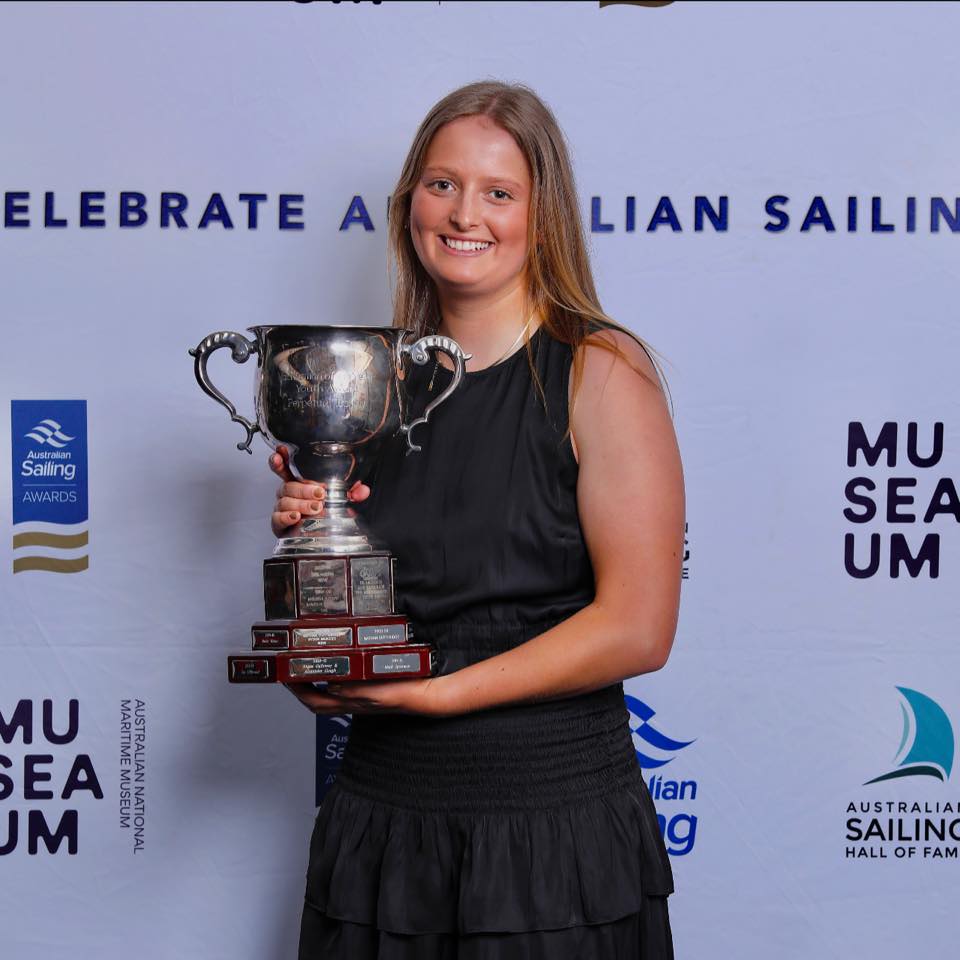
8 Student-Backed Study Tips To Help You Tackle The HSC
By University of Sydney: Last updated 6 July 2023
Our students have been through their fair share of exams and learned a lot of great study tactics along the way. Here they share their top study tips to survive and thrive during exam time.
1. Start your day right
Take care of your wellbeing first thing in the morning so you can dive into your day with a clear mind.
“If you win the morning, you can win the day,” says Juris Doctor student Vee Koloamatangi-Lamipeti.
An active start is a great way to set yourself up for a productive day. Begin your morning with exercise or a gentle walk, squeeze in 10 minutes of meditation and enjoy a healthy breakfast before you settle into study.
2. Schedule your study
“Setting up a schedule will help you organise your time so much better,” says Master of Teaching student Wesley Lai.
Setting a goal or a theme for each study block will help you to stay focused, while devoting time across a variety of subjects will ensure you've covered off as much as possible. Remember to keep your schedule realistic and avoid over-committing your time.
Adds Wesley, “Make sure to schedule in some free time for yourself as well!”
3. Keep it consistent
“Make studying a habit,” recommends Alvin Chung, who is currently undertaking a Bachelor of Arts and Bachelor of Laws.
With enough time and commitment, sitting down to study will start to feel like second nature rather than a chore.
“Do it every day and you’ll be less likely to procrastinate because it’s part of your life’s daily motions,” says Alvin.
4. Maintain motivation
Revising an entire year of learning can seem like an insurmountable task, which is why it’s so important to break down your priorities and set easy-to-achieve goals.
“I like to make a realistic to-do list where I break down big tasks into smaller chunks,” says Bachelor of Arts and Advanced Studies student Dannii Hudec.
“It’s also really important to reward yourself after you complete each task to keep yourself motivated.”
Treat yourself after each study block with something to look forward to, such as a cup of tea, a walk in the park with a friend or an episode of your latest Netflix obsession.
5. Minimise distractions
With so many distractions at our fingertips, it can be hard to focus on the task at hand. If you find yourself easily distracted, an “out of sight, out of mind” approach might do the trick.
“What helps me is to block social media on my laptop. I put my phone outside of my room when I study, or I give it to my sister or a friend to hide,” says Bachelor of Commerce and Bachelor of Laws student Caitlin Douglas.
While parting ways with your phone for a few hours may seem horrifying, it can be an incredibly effective way to stay on task.
“It really helps me to smash out the work and get my tasks done,” affirms Caitlin.
6. Beware of burnout
Think of the HSC period as a marathon rather than a sprint. It might be tempting to cram every single day but pacing out your study time will help to preserve your endurance.
“Don’t do the work for tomorrow if you finish today’s work early,” suggests Daniel Kim, who is currently undertaking a Bachelor of Commerce and Advanced Studies.
“Enjoy the rest of your day and save the energy for tomorrow,” he recommends.
Savouring your downtime will help you to avoid burning out before hitting the finish line.
7. Get a good night's sleep
Sleep is one of your greatest allies during exam season.
“I’ve found that a good night’s sleep always helps with concentration and memory consolidation,” says Bachelor of Science (Medical Science) student Yasodara Puhule-Gamayalage.
We all know we need to be getting around 8 hours of sleep a night to perform at our best, but did you know the quality of sleep also matters? You can help improve the quality of your sleep with some simple tweaks to your bedtime routine.
“Avoid caffeine in the 6 hours leading up to sleep, turn off screens an hour before going to bed, and go to bed at the same time every night,” suggests Yasodara.
8. Be kind to yourself
With exam dates looming and stress levels rising, chances are high that you might have a bad day (or a few!) during the HSC period.
According to Bachelor of Arts and Advanced Studies student Amy Cooper, the best way to handle those bad days is to show yourself some kindness.
“I know that if I’m in a bad state of mind or having a bad day, I’m not going to be able to produce work that I’m proud of,” she says.
For Amy, the remedy for a bad day is to take some time to rest and reset.
“It’s much more productive in the long run for me to go away, do some things I love, and come back with a fresh mind.”
Immerse yourself in a mentally nourishing activity such as going for a bushwalk, cooking your favourite meal, or getting stuck into a craft activity.
If you feel completely overwhelmed, know you're not alone. Reach out to a friend, family member or teacher for a chat when you need support.
There are also HSC Help resources available at: education.nsw.gov.au/student-wellbeing/stay-healthy-hsc
Wednesday 11 October, 2023: HSC written exams start.
School Leavers Support
- Download or explore the SLIK here to help guide Your Career.
- School Leavers Information Kit (PDF 5.2MB).
- School Leavers Information Kit (DOCX 0.9MB).
- The SLIK has also been translated into additional languages.
- Download our information booklets if you are rural, regional and remote, Aboriginal or Torres Strait Islander, or living with disability.
- Support for Regional, Rural and Remote School Leavers (PDF 2MB).
- Support for Regional, Rural and Remote School Leavers (DOCX 0.9MB).
- Support for Aboriginal and/or Torres Strait Islander School Leavers (PDF 2MB).
- Support for Aboriginal and/or Torres Strait Islander School Leavers (DOCX 1.1MB).
- Support for School Leavers with Disability (PDF 2MB).
- Support for School Leavers with Disability (DOCX 0.9MB).
- Download the Parents and Guardian’s Guide for School Leavers, which summarises the resources and information available to help you explore all the education, training, and work options available to your young person.
School Leavers Information Service
- navigate the School Leavers Information Kit (SLIK),
- access and use the Your Career website and tools; and
- find relevant support services if needed.
Word Of The Week: Spring
Noun
1. the season after winter and before summer, in which vegetation begins to appear, in the northern hemisphere from March to May and in the southern hemisphere from September to November. 2. an elastic device, typically a helical metal coil, that can be pressed or pulled but returns to its former shape when released, used chiefly to exert constant tension or absorb movement. 3. a sudden jump upwards or forwards - dated/innformal; an escape or release from prison. 4. a place where water or oil wells up from an underground source, or the basin or flow formed in such a way. 5. an upward curvature of a ship's deck planking from the horizontal. 6. a hawser laid out diagonally aft from a ship's bow or forward from a ship's stern and secured to a fixed point in order to prevent movement or assist manoeuvring. 7. (rare)a flock of teal.
Verb
1. move or jump suddenly or rapidly upwards or forwards. 2.originate or arise from. 3. (especially of wood) become warped or split- (of a boat) suffer splitting of (a mast or other part). 4. pay for; Archaic - spend (money). 5. INFORMALAUSTRALIAN - come upon (an illicit activity or its perpetrator).
From: Old English spring (noun), springan (verb), of Germanic origin; related to Dutch and German springen . Early use in the senses ‘head of a well’ and ‘rush out in a stream’ gave rise to the figurative use ‘originate’.
Are crows really that clever?
Mélissa Berthet, University of Zurich and Sonya Kaiser, Sorbonne UniversitéIt’s no secret corvids are endowed with remarkable cognitive abilities.
Internet is awash with videos of crows imitating voices or solving complex brainteasers. But are these birds as intelligent as they are made out to be?
The Nutcracker Puzzle
One of the most quoted studies to back up the thesis of a superior intelligence in corvids is that of crows using cars as nutcrackers. In 1978, researchers in California noted that American crows would throw nuts on the road, wait for a car to crush them and then feast on the shattered fruit.
Despite being widely circulated by the media and even by other scientists, the study is a textbook example of how studying animal behaviour can lead us, often unintentionally, to anthropomorphise – i.e., assign animals abilities or thoughts similar to humans’, when their behaviour is actually explained by different processes.
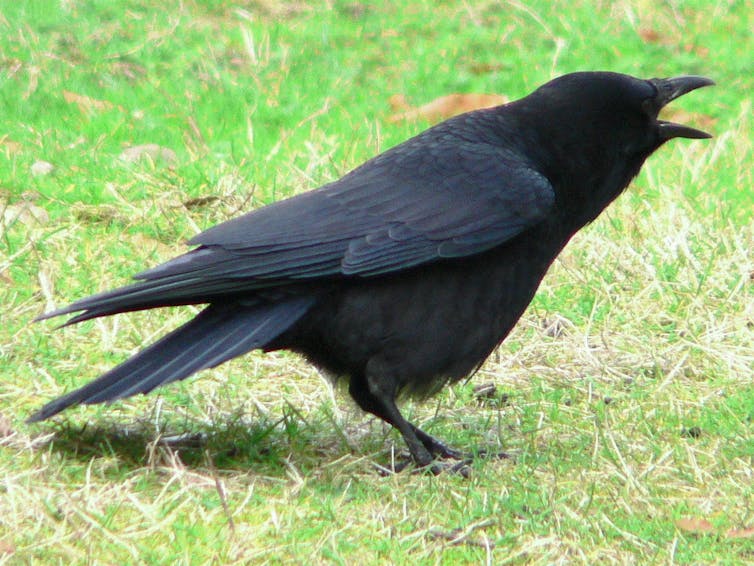
In 1997, researchers at the University of California took a closer look at the crows’ behaviour to check whether they did indeed use cars as nutcrackers. They hypothesised that if crows really understood that cars could pry nuts open, then the animals would place their nuts on the road and not remove them when a car approached.
However, the academics found that the crows did not throw their nuts onto the road when a car was approaching any more than when the road was empty. What’s more, out of the 200 cases studied, the researchers never saw a car crush a nut. This showed that the theory that crows were consciously using cars as nutcrackers was in fact false: crows drop their nuts on hard surfaces to crack them (such as roads) and a car sometimes crushes one. This is a happy coincidence for the crow, which does not, however, make the connection between the car and its meal.
Proven Cognitive Abilities
More recent research that was carried out with methods specifically designed to limit anthropomorphism is restoring corvids’ reputation for smarts. For example, it was long thought that only primates knew how to use tools. But since the 2000s, a host of studies has shown that several other species are capable of reproducing this feat, including dolphins, octopuses, corvids (crows included) and even pigs.
Corvids also appear to be highly sophisticated tool wielders thanks to their ability to choose and even manufacture tools of the right length and diameter for the task they want to accomplish, such as twigs. For example, New Caledonian Crows have a track record of producing hooks by bending materials.
They also have an impressive memory for faces. Researchers at the University of Washington, Seattle, tested this ability by donning a mask to capture and then release American crows. Wild birds would go on to aggressively scream every time they saw the masks, more than two years after they were caught. Even crows that had not been captured learned to recognise and avoid this threatening figure by observing the behaviour of their companions. This study is the first to show that wild, non-domesticated animals can recognise a human by their face and can remember it for several years, passing on this information to their fellow animals. The extent of this recognition is quite remarkable, both in temporal and social terms.
Master Raven And Self-Control
In another experiment, Rachael Miller and her colleagues at the University of Cambridge compared the self-control of Caledonian crows with that of children aged 3 to 5. Self-control is what enables us, for example, to reason with ourselves when we want to watch the last episode of a series so as not to be tired the next day. It’s an aspect of executive control, which enables us to make good decisions and plan for the future. Adults are generally able to use self-control without too much difficulty, but children only start to develop this ability between the ages of 3 and 5.
The experiment tested a specific aspect of self-control: delayed gratification, which occurs when you have to choose between a mediocre but immediate reward and a much better reward that is not immediately available. A typical example of delayed gratification is the marshmallow experiment.
In Miller’s experiment, children and crows were presented with a slowly spinning tray containing two rewards (different stickers for the children, and sweets for the crows): one of the two rewards was more interesting to the subject, either because it was bigger or because it was of better quality. As it rotated, the tray made the less valuable reward accessible to the subjects, who could then grab it. If they succumbed, the tray then stopped spinning. However, if they waited for the first reward to pass, then the second, much more interesting one, became accessible to them.
The experiment included two tests: one in which the two rewards were visible all the time, and another where they only came into view when the tray started to spin. In the second trickier test, the second most coveted reward was not visible while the first passed in front of the subjects, who then had to use their memory on top of self-control. In the first test, both the crows and the children were able to wait for the best reward. But in the second one, the children outperformed the crows, because the latter were unable to wait for a reward they could no longer see.
In fact, this experiment is one of the few that has attempted to directly compare animals and children in terms of cognitive ability, using the same task for both species. Such results are therefore very interesting and give us a better perspective on the intelligence of crows.
However, we must bear in mind that animals are often tested on abilities that we, as humans, find important and in which we excel. Our biased view of the abilities of other species leads us to believe that we are the most intelligent creatures on Earth. But if crows were to test us in areas where they are highly intelligent, such as visual memory, navigation in 3D space or perception of the Earth’s magnetic field, would we be able to compete?![]()
Mélissa Berthet, Docteur en biologie spécialisée en comportement animal, University of Zurich and Sonya Kaiser, Dual Masters in Brain and Mind Sciences, Sorbonne Université
This article is republished from The Conversation under a Creative Commons license. Read the original article.
Are we about to see a rare green comet light up the sky? An expert on what to expect from Nishimura
Jonti Horner, University of Southern QueenslandOf all the objects in the Solar System, perhaps the most spectacular are the great comets that occasionally grace our skies. If you’ve been on social media in the past few days, you’ve probably seen articles proclaiming we have such a comet in our skies right now: C/2023 P1 (Nishimura).
As I write this, comet Nishimura is swinging past on its first visit in more than 400 years. Japanese astronomer Hideo Nishimura discovered the comet on August 12. Soon after, pre-discovery images of the comet dating back to January were found, allowing astronomers to determine its path.
They quickly realised Nishimura would swing closer to the Sun than the orbit of Mercury this month. Given the comet’s brightness at the time of discovery, it could become bright enough to see with the naked eye. So, will it be a spectacular sight in our skies? Probably not.
Unfortunately, Nishimura’s path will keep it close to the Sun in the sky as observed from Earth. While it’s definitely bright enough to be visible to the naked eye in dark skies, at best it will hug the horizon just after sunset – almost lost in the Sun’s glow.
Still, astronomers across the globe are excited. Even a hard-to-spot naked-eye comet is worth observing. And as science writer and astronomer David H. Levy once said:
Comets are like cats: they have tails, and they do precisely what they want.
There’s a chance Nishimura might brighten unexpectedly. If it does, we might see something special in the couple of weeks. If not, there’s always next year – but more on that later.
Recipe For A Bright Comet
When they are far from the Sun, in the icy depths of space, comets are essentially dirty snowballs: lumps of ice, dust and rock left over from the Solar System’s formation.
As a comet approaches the Sun, its surface begins to heat up. The ices near the surface get hot and “sublime”, turning to gas and erupting outward from the comet’s surface. This gas carries dust and debris, shrouding the nucleus in a diaphanous cloud of gas and dust called a “coma”.
The solar wind then blows the gas and dust away from the Sun, which gives the comet its tail (or tails). The tails always point away from the Sun.
The comet we see is sunlight being reflected from the gas and dust in the coma and tails – the nucleus itself is hidden from sight. A comet’s brightness, therefore, is typically determined by three things:
- the size of the nucleus: a bigger nucleus typically means a larger active area (though some comets are more active than others) and more gas and dust production
- distance to the Sun: the closer the comet is to the Sun, the more active (and brighter) it will become
- distance to Earth: the closer the comet is to us, the brighter it will appear.
What About Nishimura?
That brings us to comet Nishimura. It seems likely Nishimura isn’t that large – otherwise we’d have spotted it sooner – nor is it particularly close to Earth. It is, however, passing relatively close to the Sun and is expected to be very active around perihelion (its closest point to the Sun).
Were it possible to view in a dark night sky, the comet would be quite impressive. Sadly, even at its best Nishimura will be close to the Sun in the sky.
On top of that, it just so happens the comet and Earth are located at about the worst orientation for viewing: Nishimura will stay close to the Sun as it recedes from us, remaining buried in the star’s glare.
A Short Window To See Nishimura From Australia
Nishimura will soon peek above the western horizon after sunset, but only just. The best chance to see it from Australia comes in the week of September 20 to 27, when the comet’s head will set around one hour after the Sun. It will be farthest from the Sun in the evening sky on September 23.
As twilight ends, Nishimura will be very close to the western horizon, about to set. That means it will probably be lost in the Sun’s glare.
But remember, comets are like cats. Some comets fall apart when at their closest to the Sun, in which case they often brighten significantly. If that were to happen to Nishimura, it could become much easier to spot.
Unfortunately, the comets most likely to fragment are those visiting the inner Solar System for the first time, moving on very long-period orbits of tens or hundreds of thousands of years. Nishimura is a seasoned visitor, with an orbital period of around 430 years. It has likely swung past the Sun many times and survived, which lowers the odds of it breaking apart.
Nonetheless, while the head of the comet might be lost in the twilight, the tail might still be visible as the sky darkens. Before the comet was lost in the glare to northern hemisphere viewers, observers put its tail at around six degrees in length – and it will likely grow as the comet swings closer to the Sun.
If you’re lucky, you might spot the tail standing proud above the horizon as the sky darkens.
The Next Great Comet
If Nishimura doesn’t turn out to be the show you hoped for, there’s a chance another comet could put on a truly spectacular show next year. Comet C/2023 A3 (Tsuchinshan-ATLAS) was discovered at the start of this year. It’s currently almost as far from the Sun as Jupiter.
Over the next 12 months it will continue to fall sunward, coming closest to the Sun in late September 2024. Tsuchinshan-ATLAS is looking promising. If it behaves as expected it could be a spectacular sight – but just remember: comets are like cats! ![]()
Jonti Horner, Professor (Astrophysics), University of Southern Queensland
This article is republished from The Conversation under a Creative Commons license. Read the original article.
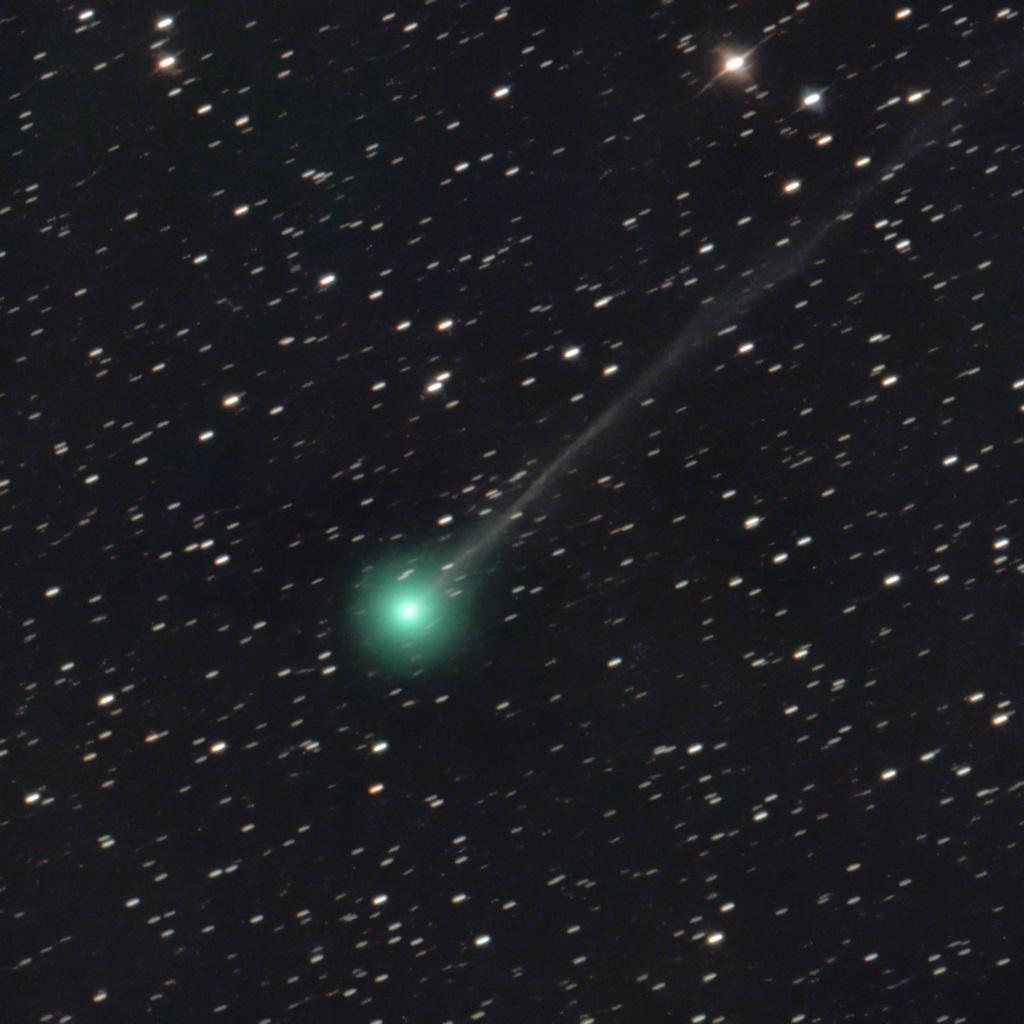
Brand-backed influencer campaigns can be hard to spot – how to tell if a company is behind a social media post

Nearly three-quarters of Generation Z (people born between 1996 and 2010) follow at least one influencer on social media platforms and 44% buy things based on influencers’ recommendations.
This age group is estimated to comprise as much as 30% of the global population, so marketers sit up and take notice when influencers become popular among this age group. Having a popular influencer talk about your product on social media can make your brand go viral.
Companies understand this and many are prepared to rejig their marketing plans to collaborate with influencers to boost brand awareness and sales. But it’s reasonable to be suspicious of such collaborations.
Some research shows 45% of marketers want to control the content and aesthetics of this type of influencer post. More specifically, 39% of US and UK and 55% of German marketers want complete control over the creative content of the influencers they work with, just like with other types of ad.
An Unvarnished Opinion
But part of the appeal of an influencer is that they are supposed to be a real-life person trying out a product and giving their natural reaction. So followers typically expect influencers to provide genuine information rather than to succumb to the control of a brand. Blatant promotion of unrealistic or unsustainable lifestyles, or the misrepresentation of facts by influencers, could result in a flood of unfollows.
Our research shows Gen Z consumers are more intolerant towards influencer campaigns perceived to be explicitly marketer-controlled versus more natural recommendations by social media personalities.
And people are more likely to “punish” social media influencers with larger follower numbers for sharing biased and fake campaigns, according to our research. Companies sponsoring the campaigns are not insulated from the ire of the followers either. We found that brands seen to be sponsoring these campaigns can suffer as a result.
Volvo’s influencer marketing campaign in collaboration with Chriselle Lim, a beauty, fashion and lifestyle influencer is a good example of this. Lim partnered with Volvo in 2015 to create a professional video highlighting that the brand is environmentally responsible and safety conscious, which was significantly different from her usual beauty content. Her followers reportedly questioned the credibility of the tie-up as a result.

Of course, some posts are clearly marked as ads for a brand. Some influencers will even sign up to be an official spokesperson for a brand. But it’s not always very clear that an influencer is a front for a corporate campaign. The UK Advertising Standards Agency (ASA) provides guidance for influencers but its research shows social media users still struggle to tell advertising content apart from non-advertising content on social media.
So how can you tell a brand-backed campaign from a real-life review?
1. Sponsorship Tags
Campaigns that are marketer-controlled are evident by sponsored tags on some platforms. Meta has “sponsorship disclosures” for its platforms, Facebook, WhatsApp and Instagram. Influencers must declare whether their campaigns are sponsored through a “paid partnership” or not. Meta says it will remove any posts that violate its rules on sponsored content.
Some influencers will also use an “in collaboration with” tag for certain campaigns to make their claims credible and authentic if a platform doesn’t have its own official tag. In a marketer-controlled campaign, the brand is often tagged multiple times, making it more of a “brand prominence” post than a typical influencer post.
Without an official sponsorship tag, an influencer could very successfully push biased views and surreptitiously promote brands’ messages for them.
2. Different Types Of Posts
During our research, we found that brand-backed influencer posts are sometimes quite different from their regular posts. Influencers act or behave in a different way than their normal content, or the creatives of the posts – how they look and sound – are different. In such situations, a brand becomes the hero of the post rather than the influencer.
Taking this too far can make it very apparent to followers that the influencer is trying to push the agenda of the brand rather than giving their actual opinion on a product. Such unnatural partnerships put the authenticity and credibility of the influencer at stake.
Rachel Arons, a Gen Z influencer, explains how online personalities remain authentic when she says: “We go on camera and speak like we’re on Facetime with a friend, which is probably less cringe” than a edited brand campaign.
Making Posts More Transparent
To keep their followers happy and engaged, most influencers need to remain real and give their unbiased opinions. They should always make it clear when they are partnering for a campaign or risk losing followers – not to mention customers for the brand. Voluntarily disclosing partnerships could even help build brand credibility.
In fact, brands should partner with influencers to come up with interesting and realistic product depictions instead of just trying to push their own message. Advertising standards should also be more consistent, bringing all platforms accessed by consumers under similar rules – perhaps even those used for advertising and promotions in print and TV ads.
Followers trust these influencers and engage with them and this trust should be protected.![]()
Abhisek Kuanr, Lecturer in Marketing, University of Essex and Debasis Pradhan, Professor of Marketing, XLRI Xavier School of Management
This article is republished from The Conversation under a Creative Commons license. Read the original article.
How video games like ‘Starfield’ are creating a new generation of classical music fans

“Starfield” is one of the most anticipated video games in recent history.
The game, which was released on Sept. 6, 2023, allows players to build their own character and spacecraft, travel to any one of a thousand or more planets and follow multiple story arcs.
The soundtrack is equally epic, with audio director Mark Lampert describing the game’s music as a “companion to the player,” with a “sense of scale” that “had to be totally readjusted,” in a recent interview about Starfield’s sound design.
Soundtracks for outer space have appeared in many films – “Star Wars,” “2001: A Space Odyssey” and “Interstellar,” to name a few.
But the interactive music of “Starfield” by composer Inon Zur does something different: Utilizing a palette of musical language that cultivates a contemplative soundscape, it launches the listener into the vastness of space while remaining curious, innocent and restrained. If you close your eyes, you can imagine it being performed in the concert hall.
That’s exactly what happened prior to the game’s release, when the London Symphony Orchestra performed the “Starfield Suite” before a sold-out audience at the Alexandra Palace Theatre, one of the world’s most prestigious concert halls.
As a conductor, musician and educator, I’m excited about games like “Starfield” because they’re drawing people to symphonic music like never before.
Classical Music Becomes Exclusive
Before recording technology, the only way to hear music was to experience it live. Throughout early history, music functioned as an integral part of cultural life: It was played at festivals, accompanied religious services and even served as a means of communication.
During the time of the Renaissance, around the middle 15th to 16th centuries, there was a shift from music as function to music as art and entertainment.
Soon, live vocal and instrumental music became a form of popular entertainment, and people clamored for bigger and better sounds. In the 16th century, the marriage of art, drama and music was consummated in opera. During the 17th and 18th centuries, instruments continued to evolve, large concert halls and opera houses were built, and composers explored new ideas that pushed boundaries.
What’s now known as “symphonic music” was born: music that was performed by a symphony orchestra. A symphony is not only a large group of musicians, but it is also a piece of music written by a composer containing multiple movements.
To hear a performance of Beethoven’s Fifth Symphony, you had to witness a symphony orchestra play it, and crowds clamored to gain entry to concert halls hear the newest and most acclaimed composers’ works.
During the 18th and early 19th centuries, however, a set of social rules calcified around this music: how to listen, what to wear, where to sit and when to applaud. As tastes and technologies began to change in the late 19th century, the masses were drawn to new forms of music like jazz. Concert halls, meanwhile, became the realm of high culture, high art and high society.
A clear divide between popular music and what became known as “classical” music emerged. That divide still exists today.
Many argue that the classical music world is no longer accessible to most people – it’s seen as too intimidating and too stuffy, with works that are too long and tickets that are too expensive. Meanwhile, symphony orchestras around the world are scrambling to diversify their music and ranks within a tradition and culture that was long reserved for the highly educated, wealthy and white.
With symphonies working to be more inclusive in their music education and program offerings, I see video games as a key way to bridge this divide.
From ‘Bleeps And Bloops’ To Symphonic Music
Due to limitations in hardware, early video games utilized synthesized “bleeps and bloops.” However, these constraints spurred programmers to think about creative ways to make games more immersive through sound.
Today, video games do not have the same limitations. Composers have the agency to create soundscapes that utilize the most advanced hardware and software, and they can employ some of the best musicians in the world to record award-winning soundtracks.
In a 2021 interview, video game composer and conductor Eimear Noone said, “More young people listen to orchestral music through their game consoles today than have ever listened to orchestral music in the history of music.”
She’s probably right. There are over 3 billion gamers around the world, and people between the ages of 18 and 25 spend the most time playing video games. A 2018 poll conducted by the U.K.‘s Royal Philharmonic Orchestra found that more young people are exposed to classical music through video games than through attending live performances.
The fusion of advanced technology and scholarship has forged worlds like those found in the “Assassin’s Creed” franchise, which can act as time machines that allow players to explore ancient Greece, with historically informed soundtracks accompanying them on their journeys.
In Activision’s “Sekiro: Shadows Die Twice,” composer Yuka Kitamura used traditional Japanese instruments to craft a sound informed by Japan’s Sengoku period; the music of “Civilization IV” contains tracks influenced by composers throughout history; and many of today’s most popular video game titles feature classical music.
“Thanks to video games,” Boston Globe music writer A.Z. Madonna wrote, “I fell in love with classical music.”
Getting The Recognition It Deserves
Today’s video game music is more interactive and nonlinear than traditional concert hall and film music. This means that composers think differently when writing for games. Tools, technologies and education for composers and musicians are changing.
The increasing complexity of video games means composers are once again pushing boundaries through expanded sound palettes. Like “Starfield,” many modern game titles incorporate symphonic music needed to provide the emotional and atmospheric underpinning of the game experience.
As the gaming industry continues to expand – it’s projected to earn US$533 billion globally by 2027 – video game soundtracks have become more and more popular. When a game is released, music streaming platforms routinely release an accompanying soundtrack.
The classical music world and symphony orchestras may finally be catching on.
In 2022, the BBC Proms, a daily summer concert series that features classical music in London, included video game music performed by the Royal Philharmonic Orchestra for the first time in history. In 2023, the Grammys recognized “Best Video Game Soundtrack” as an official category for the first time. Its inaugural winner was Stephanie Economou for her work on “Assassin’s Creed Valhalla: Dawn of Ragnarök.”
Today, there are a number of symphonic concert series – GameOn!, Game Concerts, Distant Worlds and VGL – that feature live video game music performed by top orchestras.
“Starfield” will be marked by beautiful graphics, interactive game play and a compelling story, but holding it together will be the gravity of its sonic landscape. Video game music has come a long way from its first “bleeps and bloops.” Symphonic music will continue to accompany players’ video game journeys, and like “Starfield,” the sky is no longer the limit.![]()
J. Aaron Hardwick, Orchestra Director and Assistant Professor of Music, Wake Forest University
This article is republished from The Conversation under a Creative Commons license. Read the original article.
What Manchester Museum’s return of 174 Indigenous artefacts tells us about the future of museums
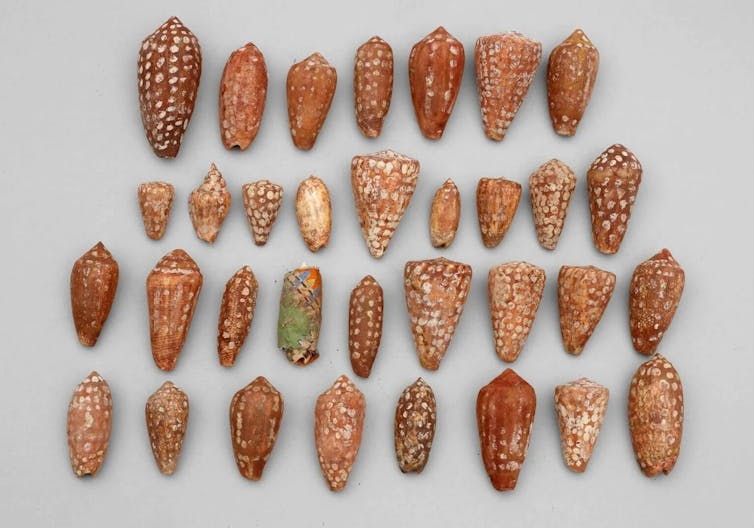
Manchester Museum has formally handed over 174 cultural heritage items to a delegation of women from the Anindilyakwa community of Groote Eylandt, an island in the Northern Territory.
Last week’s event was the result of three years of collaboration between the museum, the Anindilyakwa Land Council and the Australian Institute of Aboriginal and Torres Strait Islander Studies (AIATSIS).
The returned items included arm bands, turtle shell maps, baskets, a model canoe, spears, spear throwers and 70 Dadikwakwa-kwa (shell dolls).
The director of the Manchester Museum, Esme Ward, emphasised repatriation is:
a gain, not a loss. Once you understand that it is about building relationships, it changes everything.
Since her appointment in 2018, Ward has championed these approaches, seeing museums not just as places to care for objects and collections, but as “empathy machines” that generate ideas and foster relationships.
This focus on relationships is relatively new in museums, and remains far from universal. But if museums are to remain relevant, trusted institutions they need to move beyond traditional models of authority.
The museums of the future must become socially engaged platforms where diverse voices and perspectives come together in productive new ways.
Slow Waves Of Change
Through the 19th and early 20th centuries, museums positioned themselves as authoritative spaces for the enlightenment of the people. Indigenous artefacts, ancestors and cultural heritage were taken, traded and studied, resulting in thousands of collections held by institutions around the world.
Aboriginal and Torres Strait Islander people were objects of curiosity and study, with no say in how their history and cultural knowledge were managed or represented.

Change started slowly in the 1970s. At international meetings and conferences, professionals from colonial countries emphasised the need for more engagement with communities. There were growing calls for the repatriation of ancestral remains.
The first repatriation by an Australian museum came in 1976, when the remains of celebrated palawa leader Trukanini were returned to Tasmanian Aboriginal Community members after years of lobbying.
In the years since there have been many repatriations, though there are still many more to go.
New Relationships
The past decade has seen an interesting shift in museum practice toward a focus on relationships.
Community involvement has gradually changed the ways First Nations cultures and histories are represented in exhibitions. There are more First Nations museum professionals working in the sector than ever before, though there remains more work to do.
While Manchester Museum has returned artefacts to other communities before, its head of exhibitions and collections, Georgina Young, saw last week’s return as unique. This return was facilitated through relationships formed when Young and her colleagues visited Groote Eylandt to meet and work with Elders and community members.
For the Anindilyakwa community, awareness of the now-repatriated dolls has already helped revitalise culture through a contemporary art program, the Dadikwakwa-kwa Project, led by women from Anindilyakwa Arts. Two of the artists were part of the Manchester delegation.
Staff and visitors to the Manchester Museum had the opportunity to hear First Nations voices and stories. The repatriation and associated public programs created a space where people could experience not just historic collections, but living Anindilyakwa culture.
Australian museums are also reconsidering how they can engage with community.
Museum Victoria’s Yulendj group (from the Kulin word for “knowledge and intelligence”) was formed during development of the museum’s First People’s exhibition, installed in 2014.
The group has helped foster strong and deep relationships between the museum, its staff and community members. Aboriginal Elder Esther Kirby (Wiradjuri/Yorta Yorta/Yitha Yitha) characterised the results as like “one of those patchwork quilts. Everybody’s got a different story and them patches all join together”.
The Australian Museum’s 2021 Unsettled exhibition responded to the 250th anniversary of Captain Cook’s arrival on the Australian mainland. First Nations curatorial team Laura McBride and Mariko Smith engaged with Aboriginal and Torres Strait Islander peoples before exhibition planning had begun.
Smith describes how they wanted to embrace the role of “curator” as a conduit for First Nations voices. The resulting exhibition gave a genuine sense the curators were holding themselves accountable to community-centred relationships.
Unsettled provided visitors with new and sometimes uncomfortable perspectives on the complex history of Australia since European invasion.
Building The Future
Still, many large institutions remain resistant to change.
Conservative commentators, politicians and museum directors have expressed concerns that repatriation sets a dangerous precedent and risks opening the floodgates.
But political scientist Pierre Losson has analysed the return of cultural heritage objects from “universal museums” in North America and Europe.
He has found the return process can result in new trusted relationships. These relationships can form the basis of a model for the future: networks of related institutions and communities, rather than singular sites of preservation and display.
Thousands of First Nations objects are still held in institutions around the world. Despite the resistance of some, the hope is more museums will see these collections as opportunities for empathy and relationship-building.
For communities, reconnecting with artefacts provides new opportunities for cultural resurgence. And for the institutions involved, the relationships created provide new opportunities for public programming and exhibitions featuring diverse voices and perspectives, connecting their visitors not just with artefacts and artworks, but with living cultures.
As Ward said following the ceremony in Manchester:
We believe this is the future of museums. This is how we should be.
Mike Jones, Postdoctoral Fellow—Indigenous and Colonial Histories, University of Tasmania
This article is republished from The Conversation under a Creative Commons license. Read the original article.
Ancient shoes: tracks on a South African beach offer oldest evidence yet of human footwear
Charles Helm, Nelson Mandela UniversityWhen and where did our ancestors first fashion footwear? We cannot look to physical evidence of shoes for the answer, as the perishable materials from which they were made would no longer be evident. Ichnology, the study of fossil tracks and traces, can help to answer this unresolved question through a search for clear evidence of footprints made by humans who were shod – that is, wearing some kind of foot covering.
But this is no simple endeavour, as our research team from the Cape south coast ichnology project in South Africa recently reported. Over the past 15 years we have identified more than 350 vertebrate tracksites along the Cape coast. These include a number of tracks made by humans who were clearly walking or jogging barefoot, as evidenced by toe impressions. But we also noticed similar trackways, seemingly well preserved, that contained no toe impressions. Realising, too, that very little research has been done about when humans first fashioned footwear, we decided to investigate further.
To do so, we studied relevant research from various parts of the world, using our knowledge about milestones in human technological development such as when and where our ancestors had the technology to create bone tools which could have been used for sewing.
We also considered the areas where ancient hominin tracks have been reported. This revealed that there are two prime places on the planet to look for footprint evidence of early shod hominins: western Europe and the Cape coast of South Africa. We followed up with a little crafting of our own to create the types of footwear that might have been worn. Most of the tracksites we have found are between about 70,000 years and 150,000 years in age, so that is the time period we focused on.
Our findings, recently published in the journal Ichnos, suggest that there are at least three tracksites on the Cape south coast that might have been made by shod humans (a fourth site unfortunately rapidly deteriorated in quality and slumped into the sea). The global record of sites attributed to shod trackmakers is sparse. Until now, only four sites older than 30,000 years have been postulated, all from western Europe, including a Neanderthal site.
Though the evidence is not conclusive, we are excited about our discoveries. They support the notion of southern Africa being one region where human cognitive and practical ability developed a very long time ago.
The Study
We considered the published studies on possible shod-human tracks from western Europe, and searched the Cape coast for similar sites. Today, the ancient dune surfaces our ancestors walked along are cemented and preserved as aeolianites. We have previously reported on the tracks of our barefoot Homo sapiens ancestors along this coastline and now focused on three sites which appeared to be of hominin origin and were crisply outlined, but contained no evidence of toe impressions.
Next, we drew on our knowledge of sandals used by the indigenous San people on the sands of the Kalahari desert to give us ideas about what ancient footwear might have looked like. After studying museum specimens, depictions of footwear in the San rock art record and the oldest surviving examples of footwear, it was time to do a little cobbling.
We crafted various types of footwear and used them to create trackways on the beaches and dunes of the Cape south coast; then we analysed them.
From these experiments it became clear that an open, hard sole design, with tracks made on moist, moderately soft but nonetheless cohesive sand, best fitted the findings at the three fossil tracksites.
Preservation And Clarity
Usually, to identify hominin tracks, the presence and alignment of toe impressions is a crucial factor. Clearly such features are unlikely to be present in the tracks of ancestral humans using footwear. We needed to ensure that the findings suggesting shod hominins were genuine rather than being due to poor preservation, or erosion, or that the tracks had simply been made in soft sand by barefoot humans.
Crisp track margins therefore became an essential feature at our three sites. Tracks had to have an approximate hominin footprint outline. Strap attachment points, if they left marks in the tracks, formed a welcome bonus.
None of the three sites has been dated at this point, although nearby dated sites suggest that they range in age from around 70,000 years to more than 130,000 years old.
While our evidence is suggestive, we do not consider it conclusive as yet. We’re searching for further sites which ideally, in addition to displaying good preservation, would contain long trackways to allow for detailed analysis.
Why Make Footwear?
One obvious question stemming from this research is why our ancestors would have elected to create footwear, whereas up until that point they had survived barefoot.
Perhaps once they had developed the means to create complex clothing through bone tools, footwear might have been a logical addition. Anyone who has tried to forage on the Cape coast today knows how sharp some of the rocks are and how easy it is to suffer a laceration if not wearing shoes. In the Middle Stone Age, about 130,000 years ago, an infected laceration might well have been a death sentence.
Protection from extremes of heat and cold might also have been incentives, and the use of footwear might initially have been occasional or intermittent.![]()
Charles Helm, Research Associate, African Centre for Coastal Palaeoscience, Nelson Mandela University
This article is republished from The Conversation under a Creative Commons license. Read the original article.
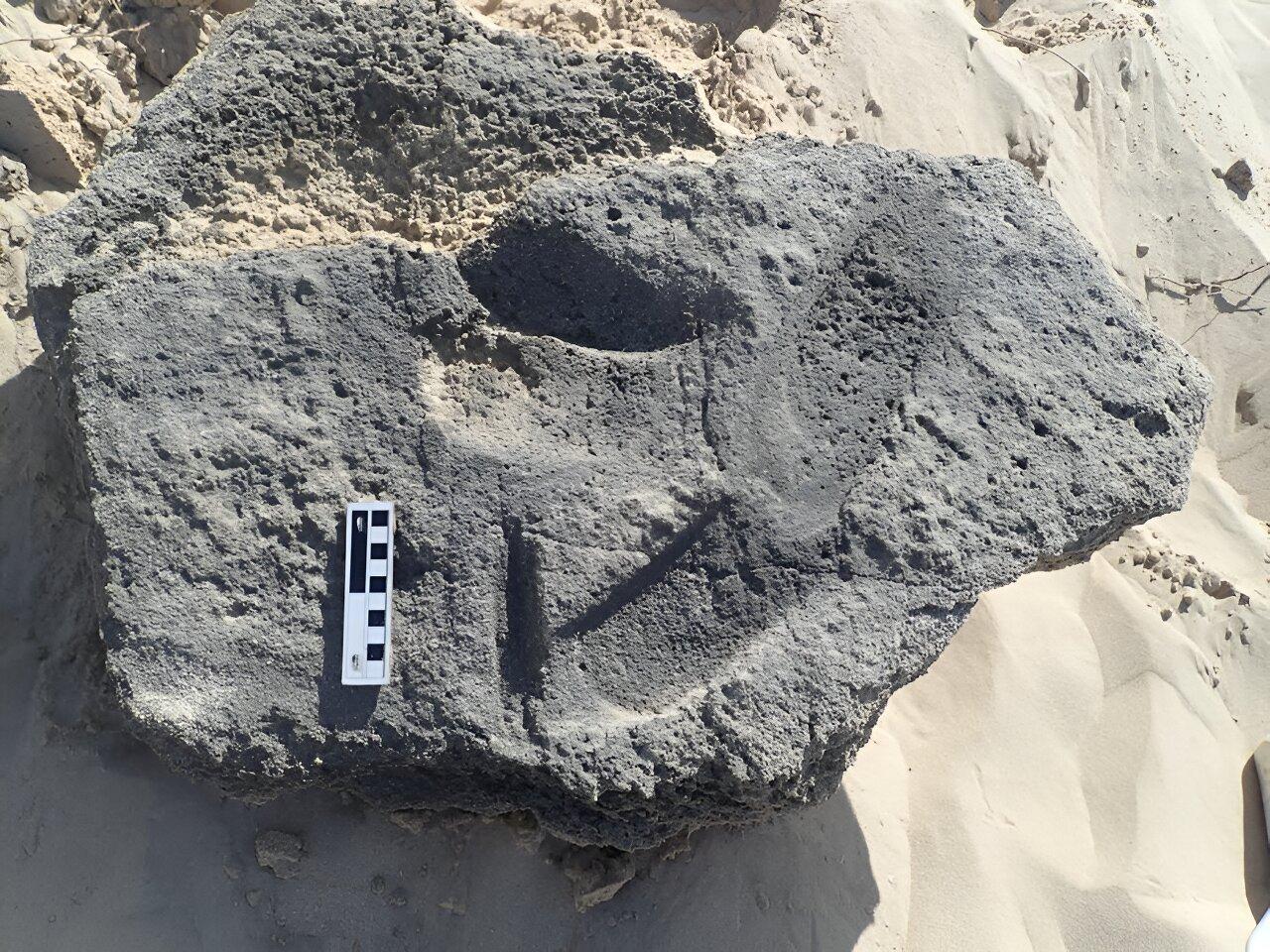
Does running water really trigger the urge to pee? Experts explain the brain-bladder connection
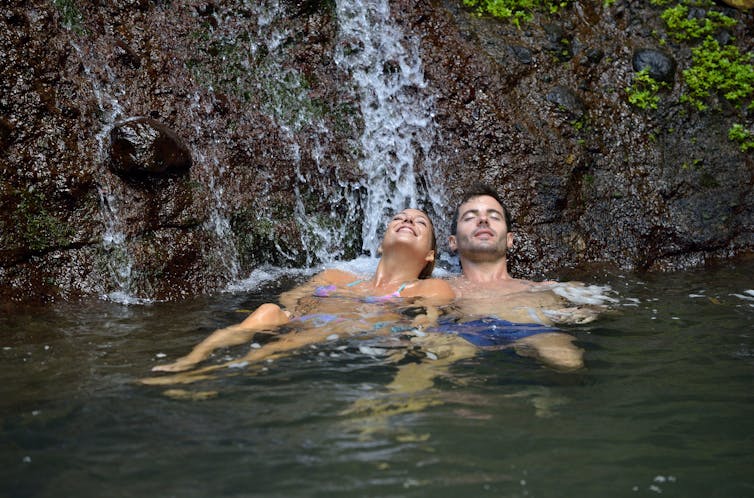
We all know that feeling when nature calls – but what’s far less understood is the psychology behind it. Why, for example, do we get the urge to pee just before getting into the shower, or when we’re swimming? What brings on those “nervous wees” right before a date?
Research suggests our brain and bladder are in constant communication with each other via a neural network called the brain-bladder axis.
This complex web of circuitry is comprised of sensory neural activity, including the sympathetic and parasympathetic nervous systems. These neural connections allow information to be sent back and forth between the brain and bladder.
The brain-bladder axis not only facilitates the act of peeing, but is also responsible for telling us we need to go in the first place.
How Do We Know When We Need To Go?
As the bladder fills with urine and expands, this activates special receptors detecting stretch in the nerve-rich lining of the bladder wall. This information is then relayed to the “periaqueductal gray” – a part of the brain in the brainstem which constantly monitors the bladder’s filling status.

Once the bladder reaches a certain threshold (roughly 250-300ml of urine), another part of the brain called the “pontine micturition centre” is activated and signals that the bladder needs to be emptied. We, in turn, register this as that all-too-familiar feeling of fullness and pressure down below.
Beyond this, however, a range of situations can trigger or exacerbate our need to pee, by increasing the production of urine and/or stimulating reflexes in the bladder.
Peeing In The Shower
If you’ve ever felt the need to pee while in the shower (no judgement here) it may be due to the sight and sound of running water.
In a 2015 study, researchers demonstrated that males with urinary difficulties found it easier to initiate peeing when listening to the sound of running water being played on a smartphone.
Symptoms of overactive bladder, including urgency (a sudden need to pee), have also been linked to a range of environmental cues involving running water, including washing your hands and taking a shower.
This is likely due to both physiology and psychology. Firstly, the sound of running water may have a relaxing physiological effect, increasing activity of the parasympathetic nervous system. This would relax the bladder muscles and prepare the bladder for emptying.
At the same time, the sound of running water may also have a conditioned psychological effect. Due to the countless times in our lives where this sound has coincided with the actual act of peeing, it may trigger an instinctive reaction in us to urinate.
This would happen in the same way Pavlov’s dog learnt, through repeated pairing, to salivate when a bell was rung.
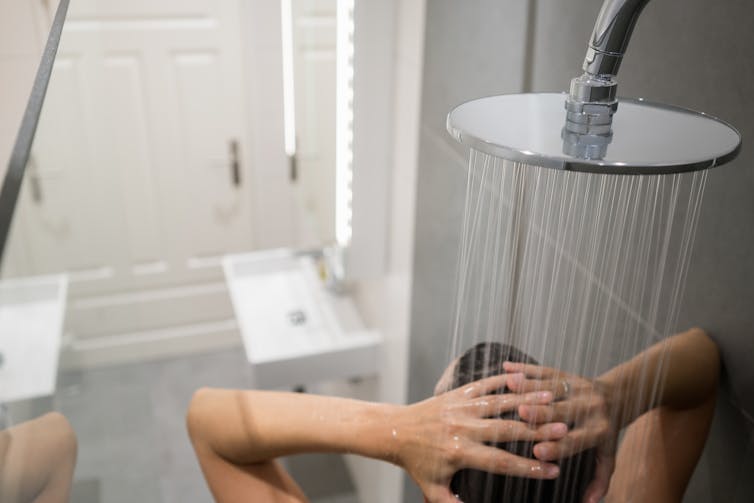
Cheeky Wee In The Sea
But it’s not just the sight or sound of running water that makes us want to pee. Immersion in cold water has been shown to cause a “cold shock response”, which activates the sympathetic nervous system.
This so-called “fight or flight” response drives up our blood pressure which, in turn, causes our kidneys to filter out more fluid from the bloodstream to stabilise our blood pressure, in a process called “immersion diuresis”. When this happens, our bladder fills up faster than normal, triggering the urge to pee.
Interestingly, immersion in very warm water (such as a relaxing bath) may also increase urine production. In this case, however, it’s due to activation of the parasympathetic nervous system. One study demonstrated an increase in water temperature from 40℃ to 50℃ reduced the time it took for participants to start urinating.
Similar to the effect of hearing running water, the authors of the study suggest being in warm water is calming for the body and activates the parasympathetic nervous system. This activation can result in the relaxation of the bladder and possibly the pelvic floor muscles, bringing on the urge to pee.
The Nervous Wee
We know stress and anxiety can cause bouts of nausea and butterflies in the tummy, but what about the bladder? Why do we feel a sudden and frequent urge to urinate at times of heightened stress, such as before a date or job interview?
When a person becomes stressed or anxious, the body goes into fight-or-flight mode through the activation of the sympathetic nervous system. This triggers a cascade of physiological changes designed to prepare the body to face a perceived threat.
As part of this response, the muscles surrounding the bladder may contract, leading to a more urgent and frequent need to pee. Also, as is the case during immersion diuresis, the increase in blood pressure associated with the stress response may stimulate the kidneys to produce more urine.
Some Final Thoughts
We all pee (most of us several times a day). Yet research has shown about 75% of adults know little about how this process actually works – and even less about the brain-bladdder axis and its role in urination.
Most Australians will experience urinary difficulties at some point in their lives, so if you ever have concerns about your urinary health, it’s extremely important to consult a healthcare professional.
And should you ever find yourself unable to pee, perhaps the sight or sound of running water, a relaxing bath or a nice swim will help with getting that stream to flow.![]()
James Overs, Research Assistant, Swinburne University of Technology; David Homewood, Urology Research Registrar, Western Health, Melbourne Health; Helen Elizabeth O'Connell AO, Professor, University of Melbourne, Department of Surgery. President Urological Society Australia and New Zealand, The University of Melbourne, and Simon Robert Knowles, Associate Professor and Clinical Psychologist, Swinburne University of Technology
This article is republished from The Conversation under a Creative Commons license. Read the original article.
avalon Beach Historical Society Celebrates 40 Years
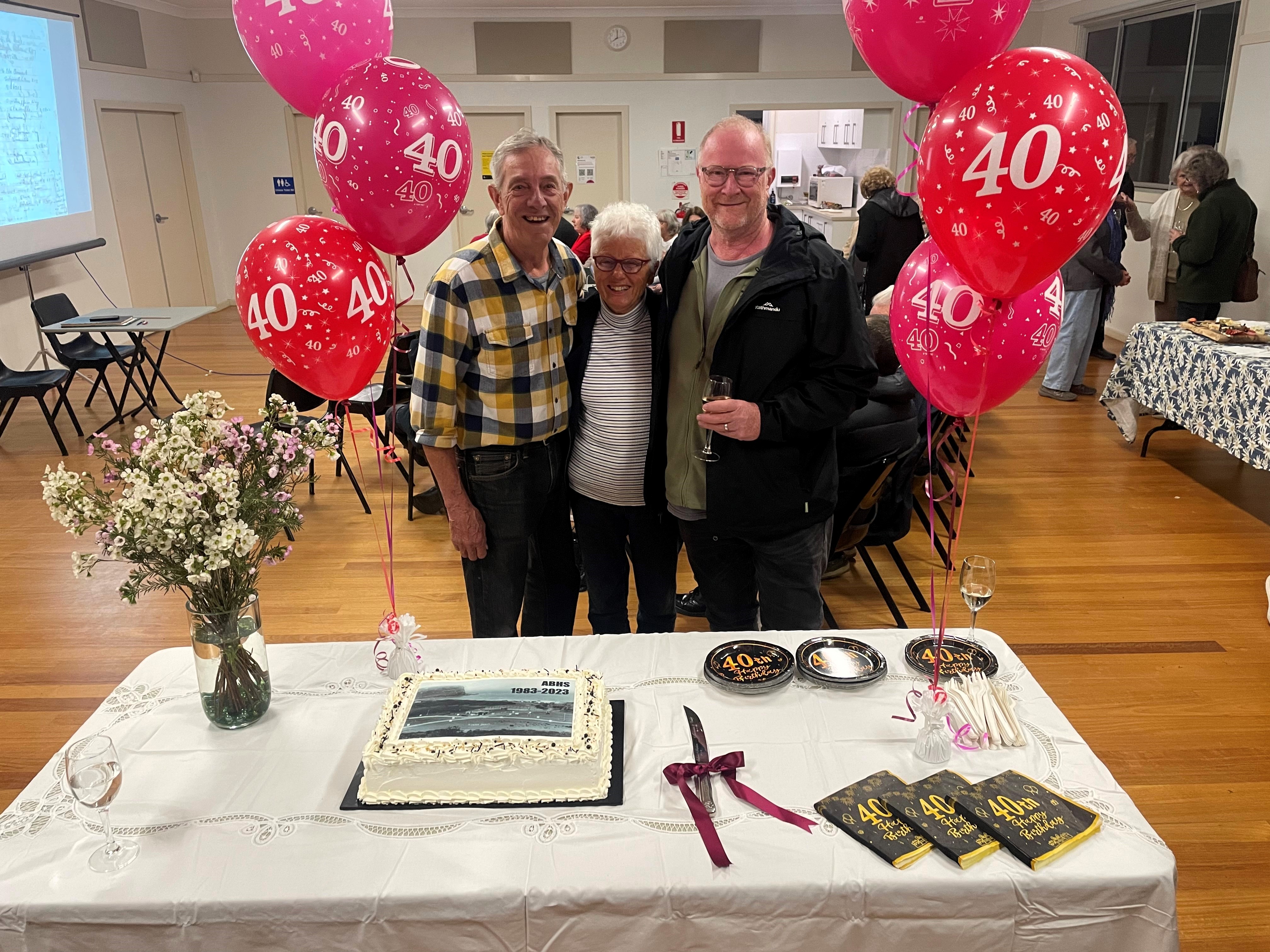
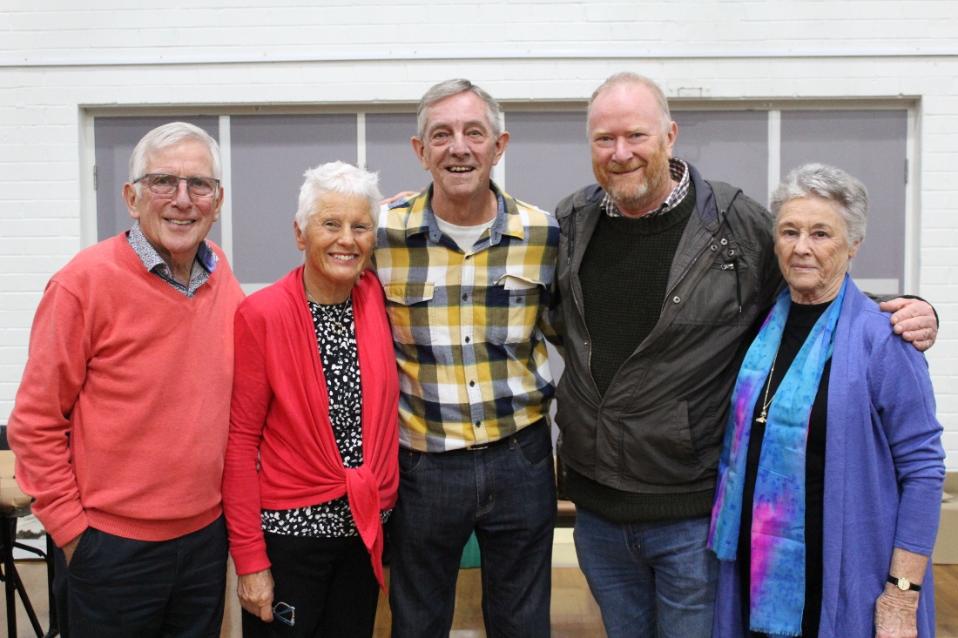
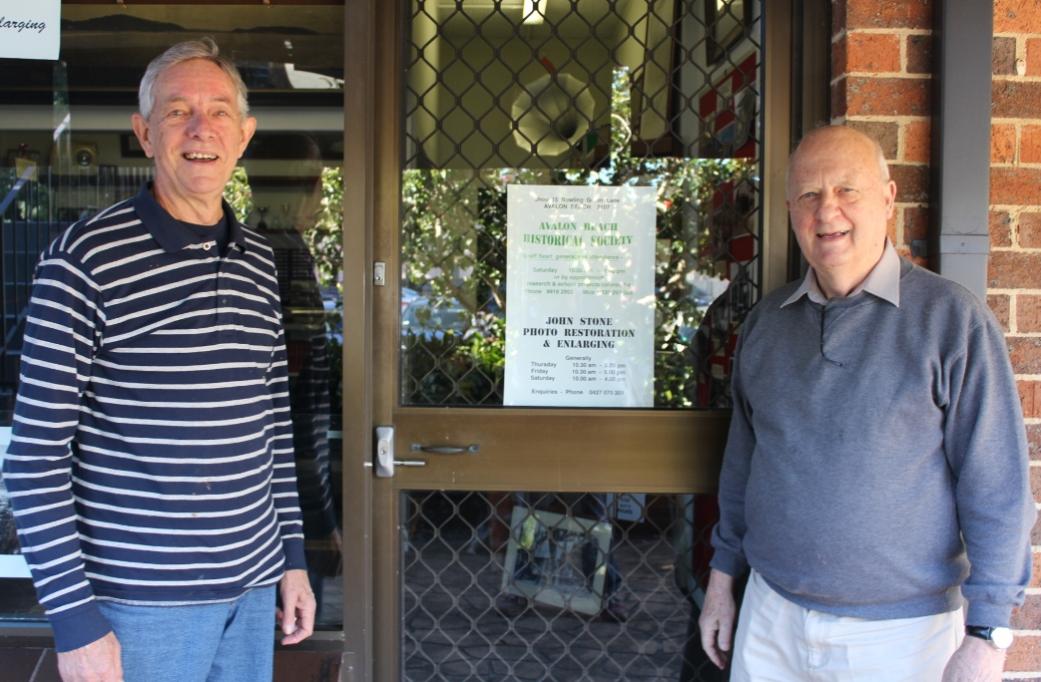
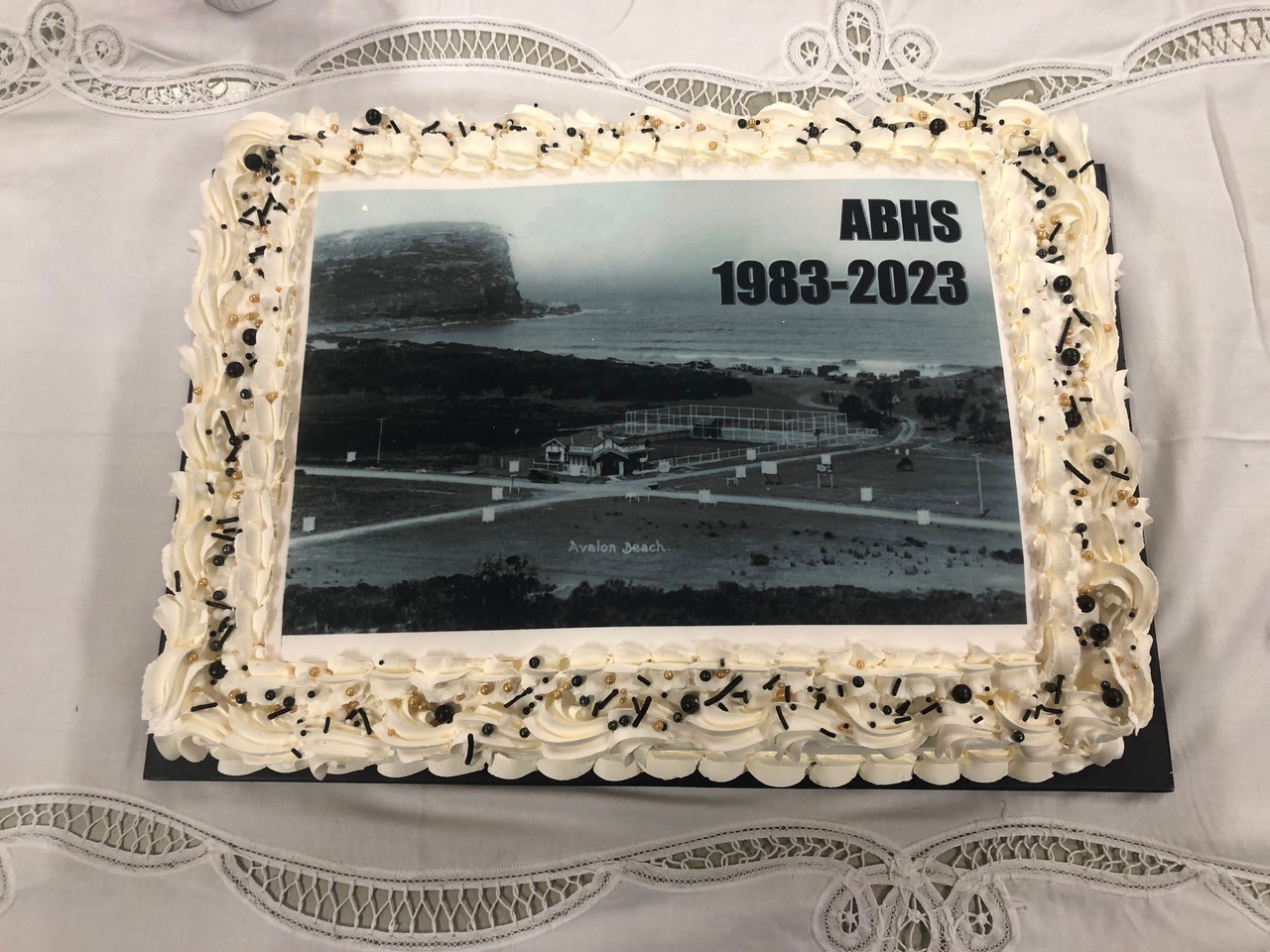
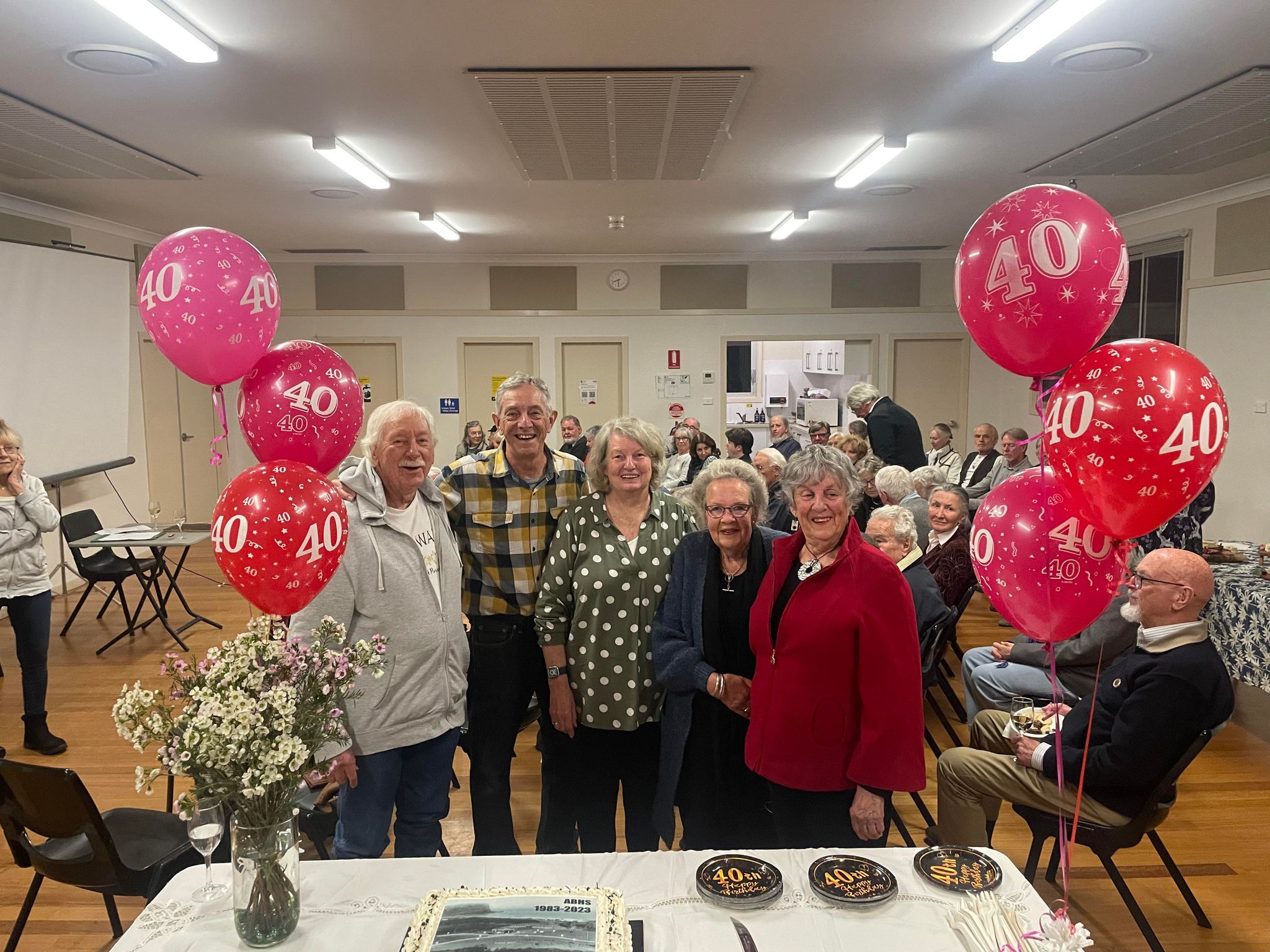
Vale: Ken 'Sava' Lloyd

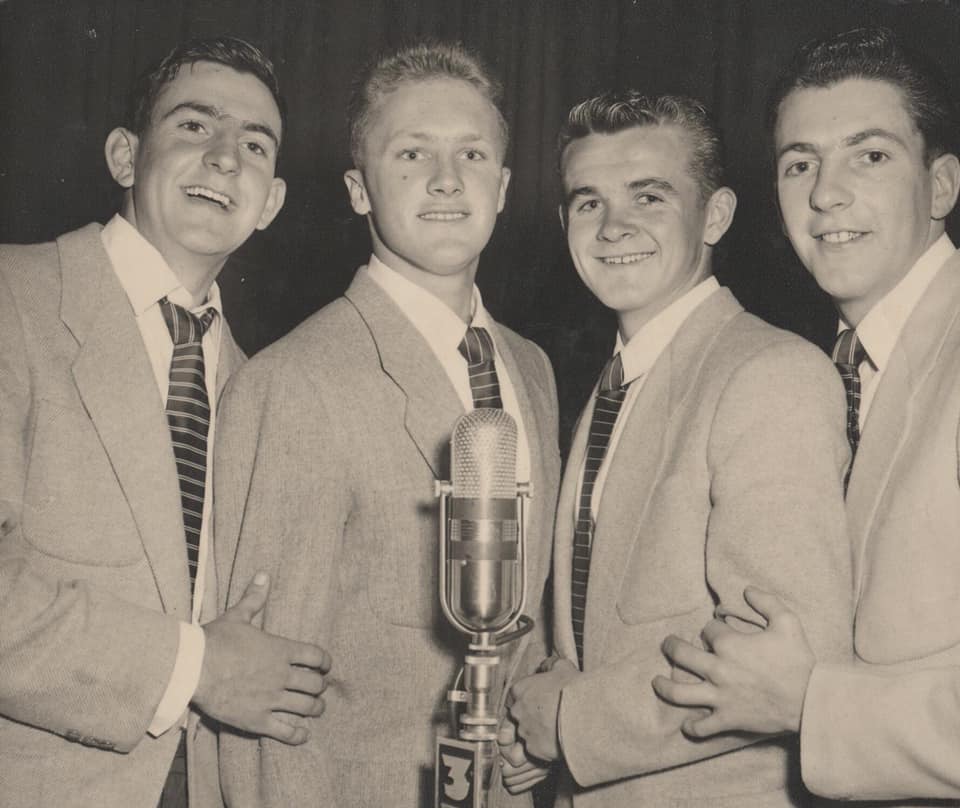
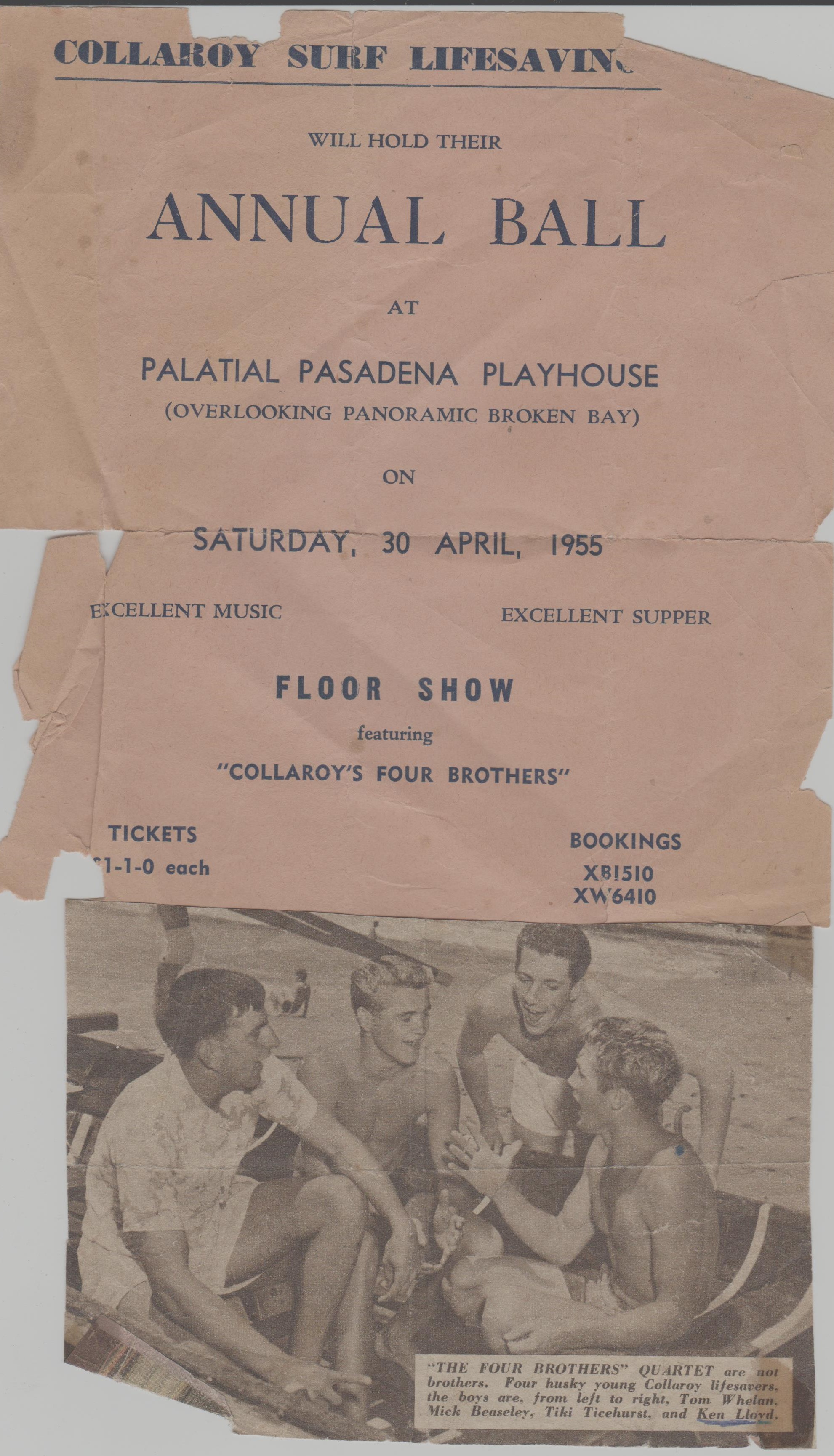
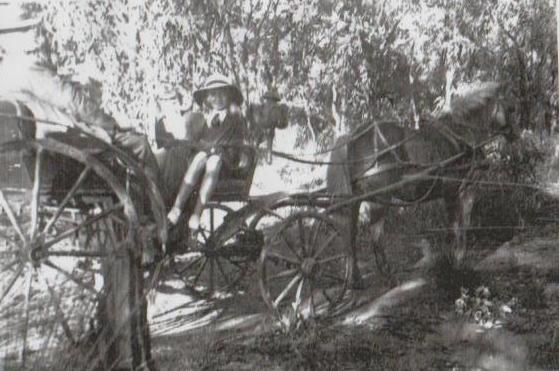
Sava; ''I have attached a photo of Fred, Elva and Bill and myself in trap and Fred was taking sister Elva to school at Katoomba. The sulky is the one Fred Lloyd borrowed off Mark Foy.''

Mr. Lloyd's Fishing Shack at Long Reef. Painting by G K Townshend - courtesy 'Sava Lloyd'.
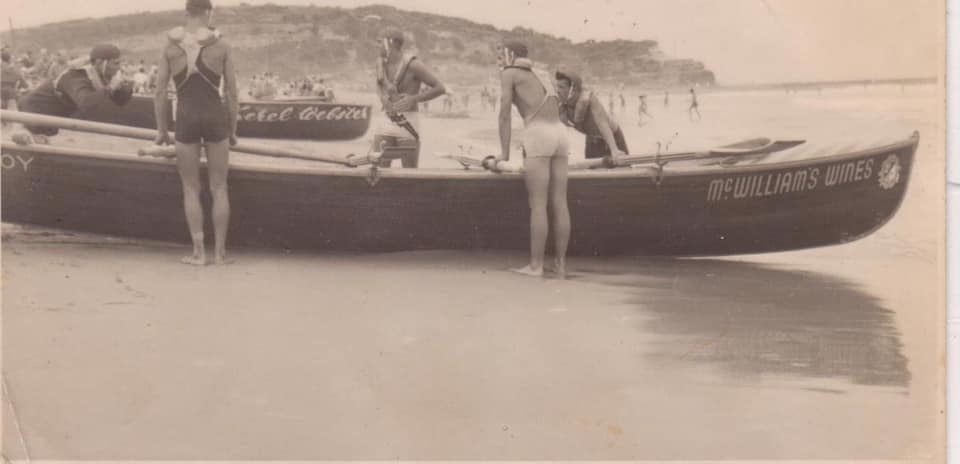
Celebrations For Dedicated NSW RFS Members: September 2023
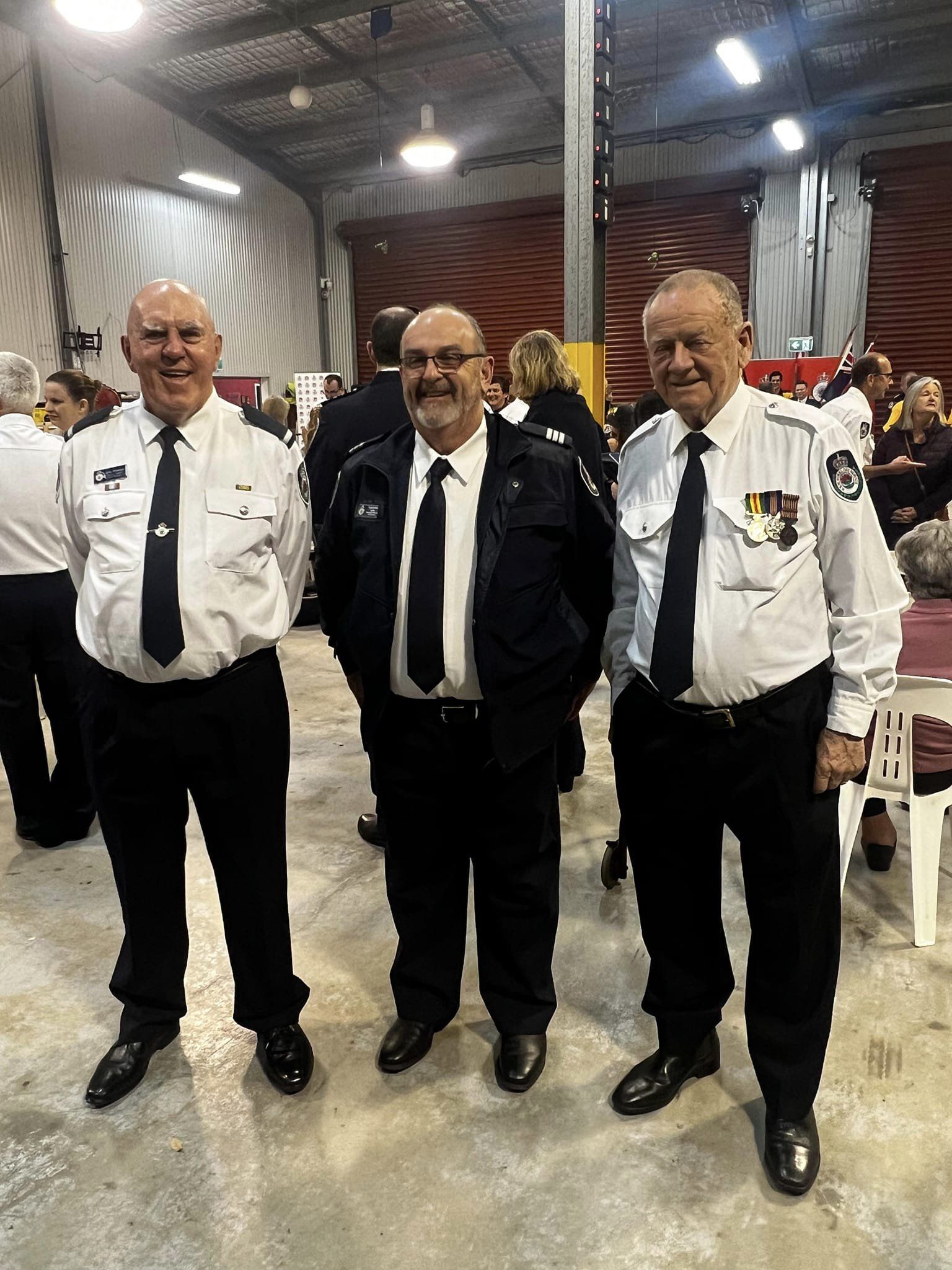
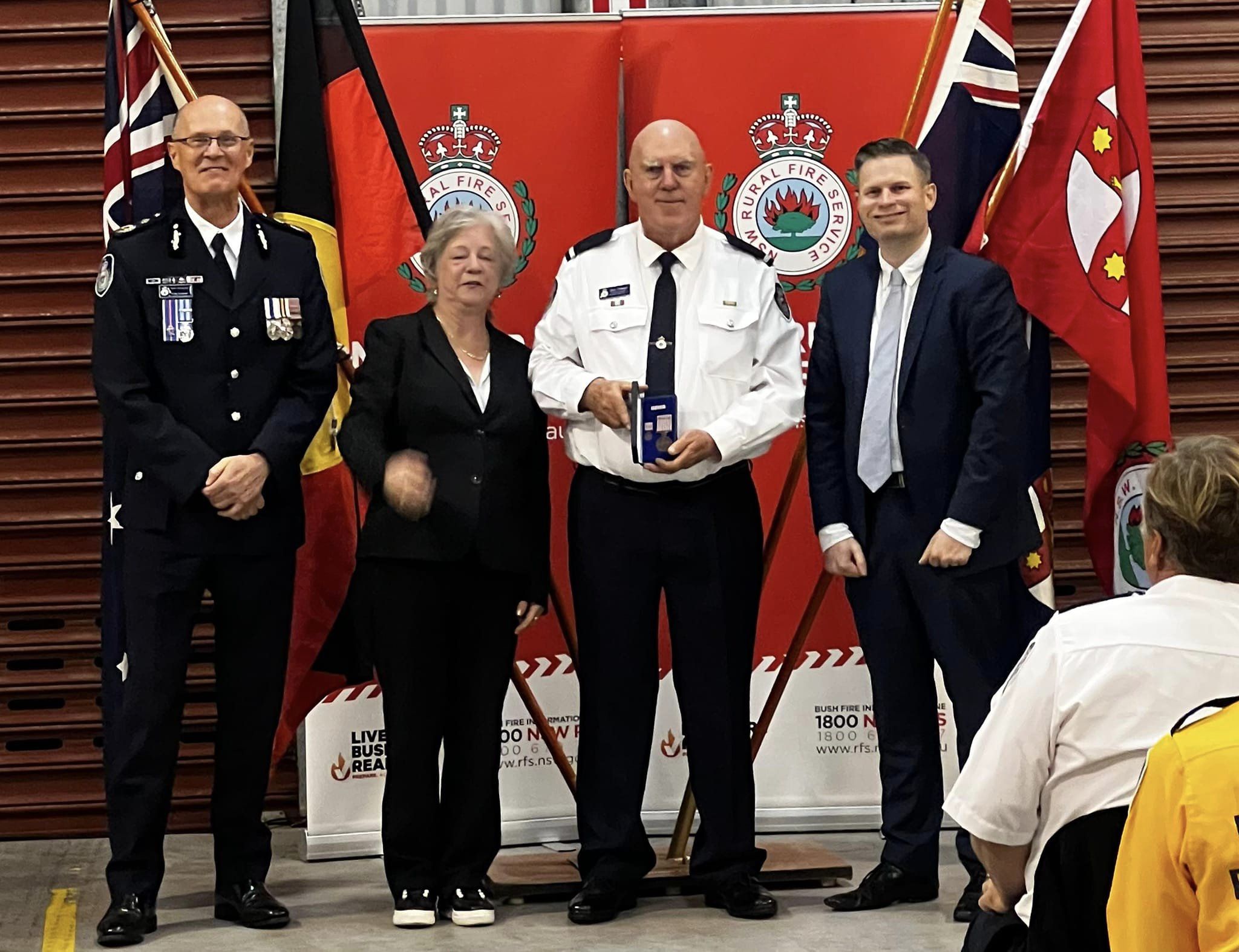
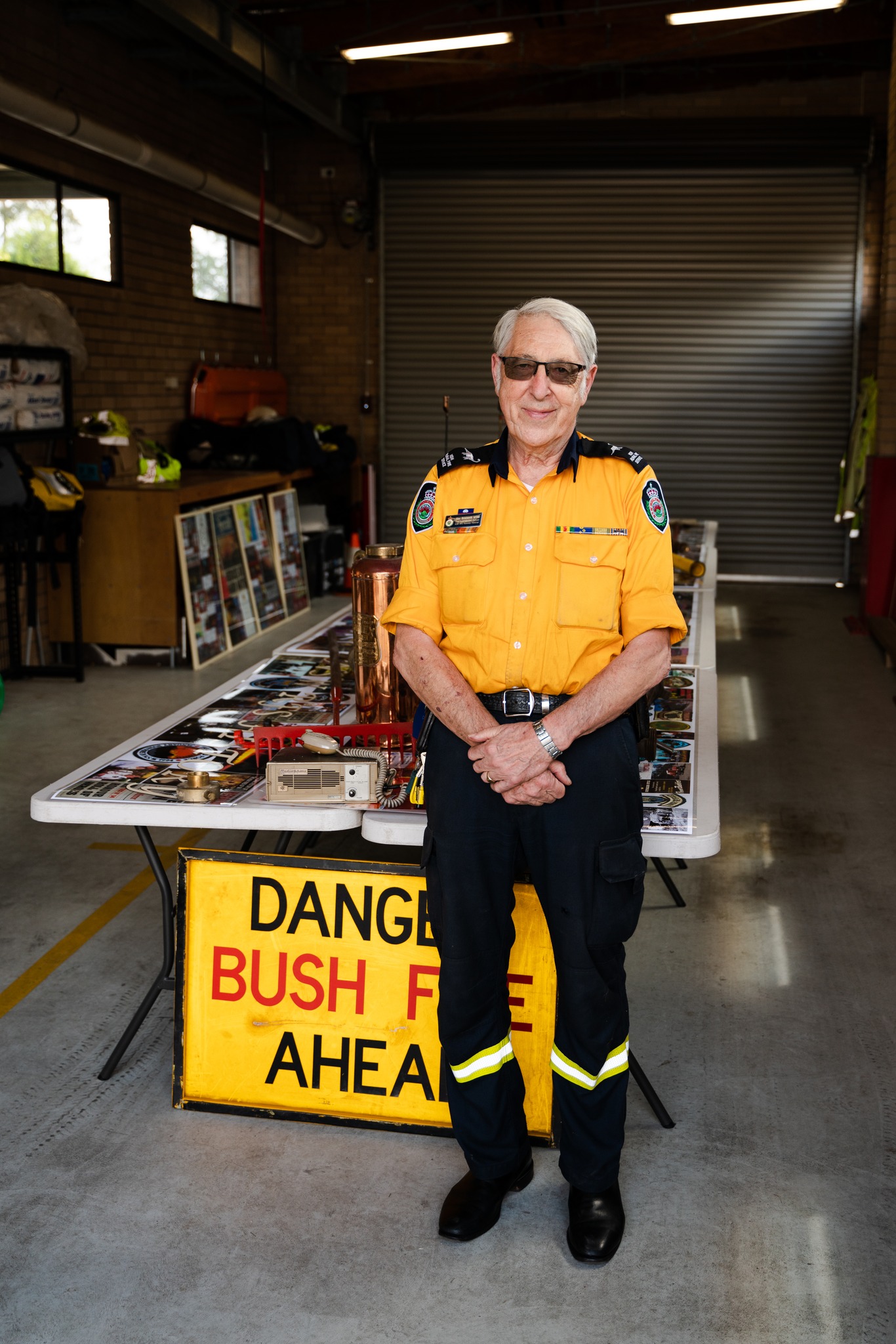
Rising Cost Of Living Keeps Older People Awake At Night
- According to research, 53% of older Australians believe they will outlive their savings.
Inquiry Into Housing Policies And Practices For Precariously Housed Older Australians
Are we about to see a rare green comet light up the sky? An expert on what to expect from Nishimura
Jonti Horner, University of Southern QueenslandOf all the objects in the Solar System, perhaps the most spectacular are the great comets that occasionally grace our skies. If you’ve been on social media in the past few days, you’ve probably seen articles proclaiming we have such a comet in our skies right now: C/2023 P1 (Nishimura).
As I write this, comet Nishimura is swinging past on its first visit in more than 400 years. Japanese astronomer Hideo Nishimura discovered the comet on August 12. Soon after, pre-discovery images of the comet dating back to January were found, allowing astronomers to determine its path.
They quickly realised Nishimura would swing closer to the Sun than the orbit of Mercury this month. Given the comet’s brightness at the time of discovery, it could become bright enough to see with the naked eye. So, will it be a spectacular sight in our skies? Probably not.
Unfortunately, Nishimura’s path will keep it close to the Sun in the sky as observed from Earth. While it’s definitely bright enough to be visible to the naked eye in dark skies, at best it will hug the horizon just after sunset – almost lost in the Sun’s glow.
Still, astronomers across the globe are excited. Even a hard-to-spot naked-eye comet is worth observing. And as science writer and astronomer David H. Levy once said:
Comets are like cats: they have tails, and they do precisely what they want.
There’s a chance Nishimura might brighten unexpectedly. If it does, we might see something special in the couple of weeks. If not, there’s always next year – but more on that later.
Recipe For A Bright Comet
When they are far from the Sun, in the icy depths of space, comets are essentially dirty snowballs: lumps of ice, dust and rock left over from the Solar System’s formation.
As a comet approaches the Sun, its surface begins to heat up. The ices near the surface get hot and “sublime”, turning to gas and erupting outward from the comet’s surface. This gas carries dust and debris, shrouding the nucleus in a diaphanous cloud of gas and dust called a “coma”.
The solar wind then blows the gas and dust away from the Sun, which gives the comet its tail (or tails). The tails always point away from the Sun.
The comet we see is sunlight being reflected from the gas and dust in the coma and tails – the nucleus itself is hidden from sight. A comet’s brightness, therefore, is typically determined by three things:
- the size of the nucleus: a bigger nucleus typically means a larger active area (though some comets are more active than others) and more gas and dust production
- distance to the Sun: the closer the comet is to the Sun, the more active (and brighter) it will become
- distance to Earth: the closer the comet is to us, the brighter it will appear.
What About Nishimura?
That brings us to comet Nishimura. It seems likely Nishimura isn’t that large – otherwise we’d have spotted it sooner – nor is it particularly close to Earth. It is, however, passing relatively close to the Sun and is expected to be very active around perihelion (its closest point to the Sun).
Were it possible to view in a dark night sky, the comet would be quite impressive. Sadly, even at its best Nishimura will be close to the Sun in the sky.
On top of that, it just so happens the comet and Earth are located at about the worst orientation for viewing: Nishimura will stay close to the Sun as it recedes from us, remaining buried in the star’s glare.
A Short Window To See Nishimura From Australia
Nishimura will soon peek above the western horizon after sunset, but only just. The best chance to see it from Australia comes in the week of September 20 to 27, when the comet’s head will set around one hour after the Sun. It will be farthest from the Sun in the evening sky on September 23.
As twilight ends, Nishimura will be very close to the western horizon, about to set. That means it will probably be lost in the Sun’s glare.
But remember, comets are like cats. Some comets fall apart when at their closest to the Sun, in which case they often brighten significantly. If that were to happen to Nishimura, it could become much easier to spot.
Unfortunately, the comets most likely to fragment are those visiting the inner Solar System for the first time, moving on very long-period orbits of tens or hundreds of thousands of years. Nishimura is a seasoned visitor, with an orbital period of around 430 years. It has likely swung past the Sun many times and survived, which lowers the odds of it breaking apart.
Nonetheless, while the head of the comet might be lost in the twilight, the tail might still be visible as the sky darkens. Before the comet was lost in the glare to northern hemisphere viewers, observers put its tail at around six degrees in length – and it will likely grow as the comet swings closer to the Sun.
If you’re lucky, you might spot the tail standing proud above the horizon as the sky darkens.
The Next Great Comet
If Nishimura doesn’t turn out to be the show you hoped for, there’s a chance another comet could put on a truly spectacular show next year. Comet C/2023 A3 (Tsuchinshan-ATLAS) was discovered at the start of this year. It’s currently almost as far from the Sun as Jupiter.
Over the next 12 months it will continue to fall sunward, coming closest to the Sun in late September 2024. Tsuchinshan-ATLAS is looking promising. If it behaves as expected it could be a spectacular sight – but just remember: comets are like cats! ![]()
Jonti Horner, Professor (Astrophysics), University of Southern Queensland
This article is republished from The Conversation under a Creative Commons license. Read the original article.
U3a At Newport Community Centre: Coming Up
- access to a wide range of courses and presentations
- friendly and inviting social events in your region
- Volunteers lead and administer the courses and talks
- A wide range of topics is covered – from learning foreign languages to table tennis to history to book/movie clubs to philosophy to science related issues. There’s something for everyone!
- Courses are held in a variety of local venues and via Zoom
- Events, visits, tours and social activities are also offered
- Full details of activities are listed each semester in the Course Book and on individual regional pages
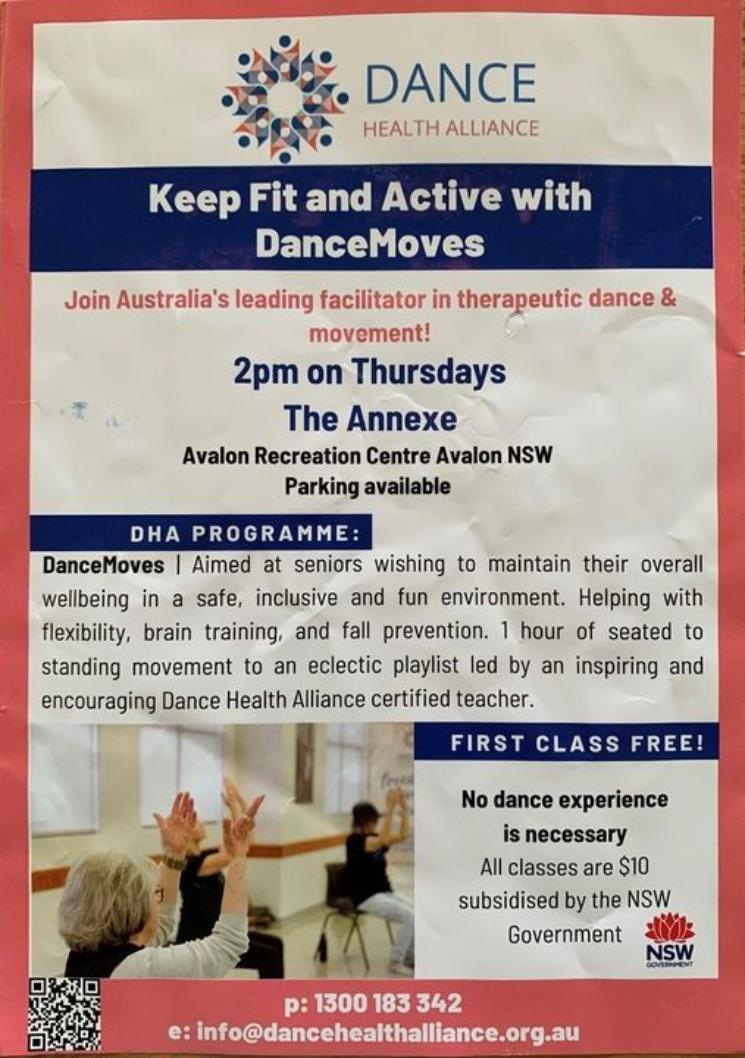
Pittwater RSL: Seniors Show + Lunch 2023
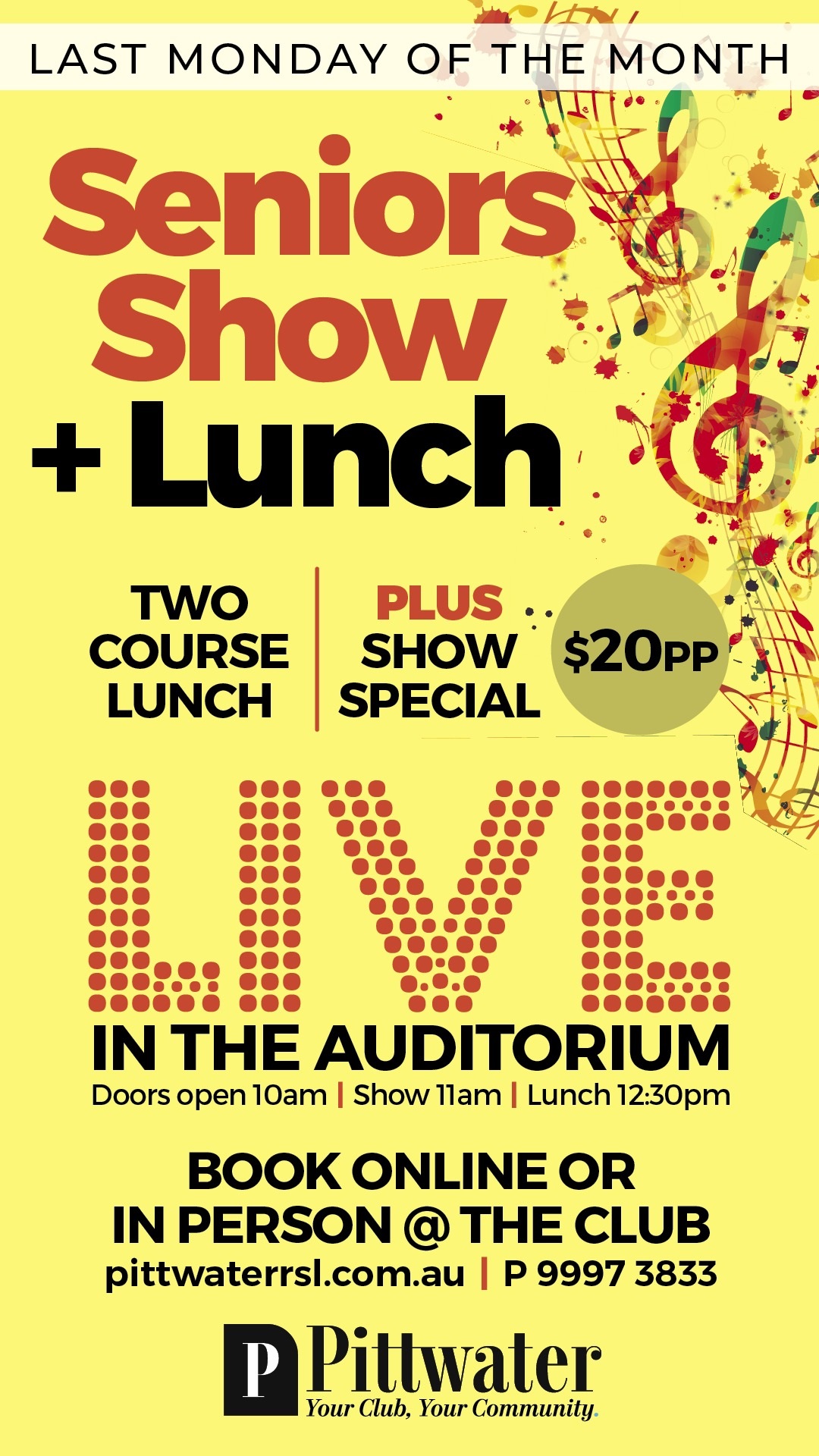
Active And Healthy At Any Age
Join Healthy And Active For Life Online!
- Providing online exercise programs for you to complete in the comfort of your home
- Providing you with an exercise manual and log to keep you on track
- Helping you to create realistic goals and increase your fitness
Time To Surgery Is Critical For Survival After Hip Fracture
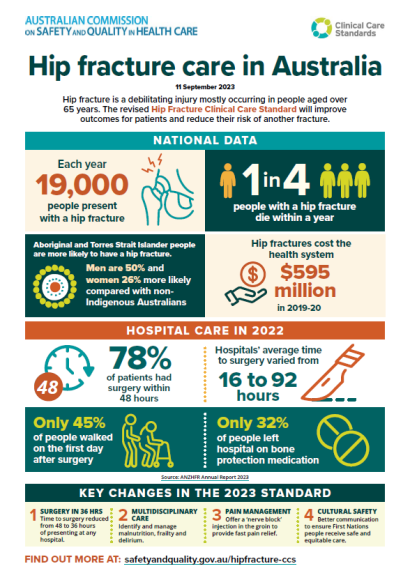
World Patient Safety Day: 17 September
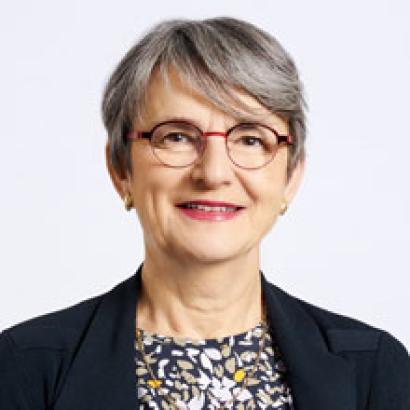
App Unlocking Benefits Of Music Therapy, Wearable Tech And AI For Dementia Awarded $2m Grant
Bilgola Plateau Probus Club 1st Birthday
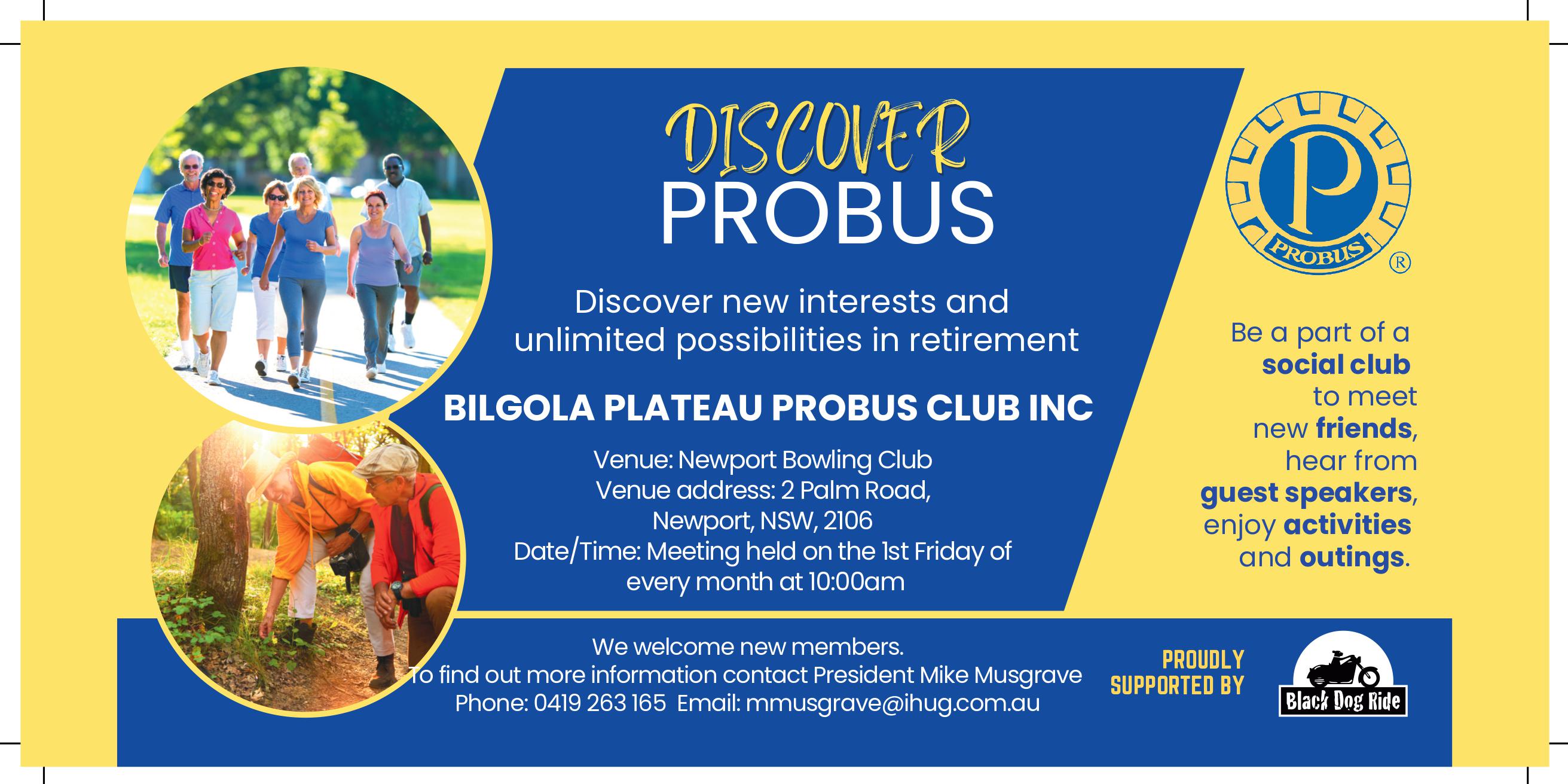

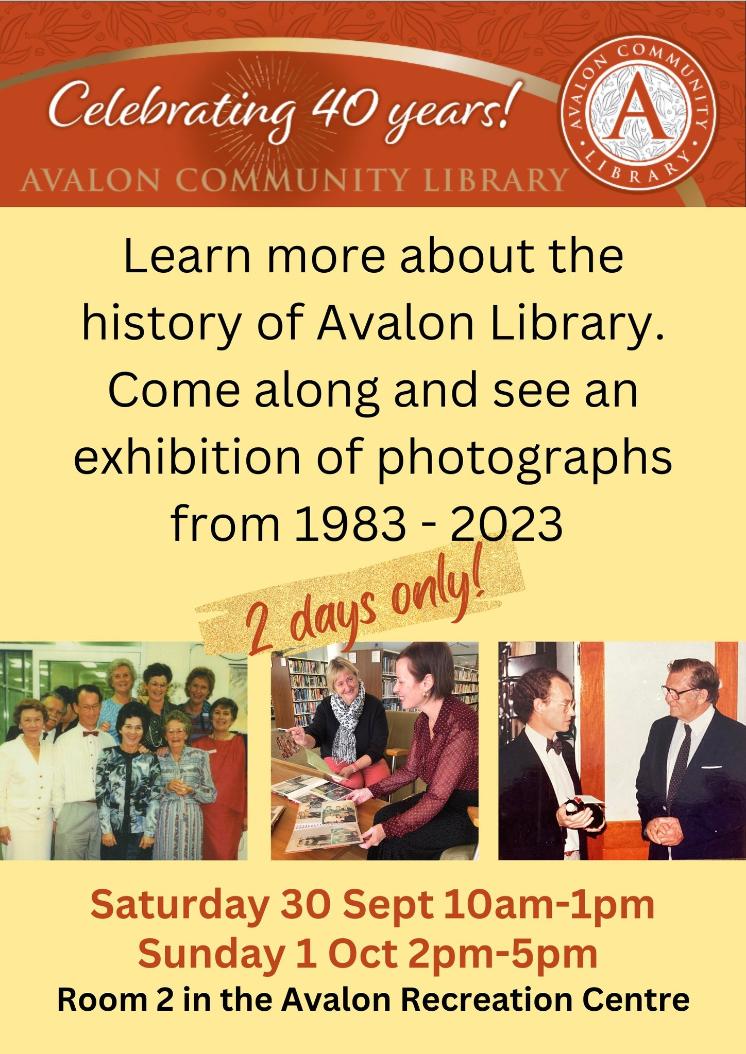
Spring Surfing Celebration

COTA Australia Backs ‘YES’ Campaign For A Voice To Parliament
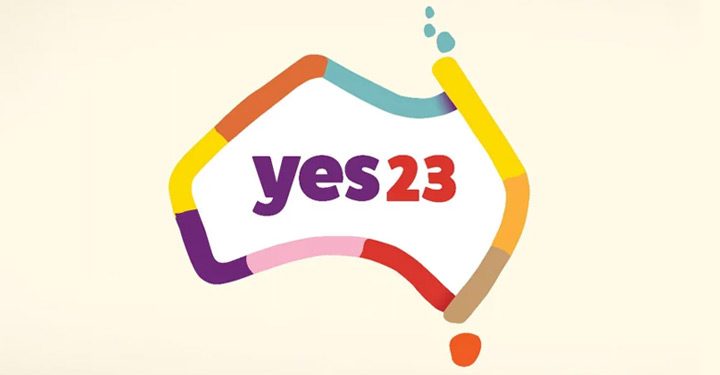
Google Chrome just rolled out a new way to track you and serve ads. Here’s what you need to know

Late last week, Google announced something called the Privacy Sandbox has been rolled out to a “majority” of Chrome users, and will reach 100% of users in the coming months. But what is it, exactly?
The new suite of features represents a fundamental shift in how Chrome will track user data for the benefit of advertisers. Instead of third-party cookies, Chrome can now tap directly into your browsing history to gather information on advertising “topics” (more on that later).
In development since 2019, this change has attracted a great deal of controversy, as some commentators have deemed it invasive in terms of privacy.
Understanding how it works – and whether you want to opt in or out – is important, since Chrome remains the most widely used browser in the world, with a 63% market share as of May 2023 (Safari is in second place with 13%).
Wait, What Is A Cookie?
In 1994, computer engineer Lou Montulli at Netscape revolutionised the way we browsed the internet with his invention of the “cookie”. For the first time, web pages could remember our passwords, preferences, language settings and even shopping carts.
This method was supposed to be a private exchange of information just between a user and a website – what’s known as a first-party cookie. But within two years, advertisers worked out how to “hack” cookies to track users. These are third-party cookies.
You can think of a first-party cookie like a shop assistant who listens to your preferences and is happy to hold your bags or clothes while you make your selection – but only while you are inside their store.
A third-party cookie is like a bug from an old spy movie. It listens to everything in your room, but only shares the info with its allies. The “spy” can place this cookie on other people’s sites, to record what you visit and what data you enter. If you’ve ever wondered how Facebook has served you an ad about something related to a news story you just read, chances are it’s because you have third-party cookies enabled.
Unregulated online tracking and surveillance via cookies were the default until 2018, when the European Union’s General Data Protection Regulations (GDPR) and the California Consumer Privacy Act (CCPA) were introduced. If you have noticed more pop-ups notifying you of cookies and asking for your informed consent, you have the GDPR and CCPA to thank.
The first browsers to turn off support for third-party cookies were Apple’s Safari in 2017 and Mozilla’s Firefox in 2019.
But Google is also a major online advertising company, with ads making up 57.8% of Google’s revenue as of 2023. They have been slowest off the mark in turning off third-party cookies in Chrome. With the introduction of the Privacy Sandbox, they now hope to start turning cookies off sometime in 2024.
How Is The Privacy Sandbox Different From Cookies?
The details on how the Privacy Sandbox collection of features works are rather technical. But here are a few of the most important aspects.
Instead of using third-party cookies to serve you ads across the internet, Chrome will provide something called advertising Topics. These are high-level summaries of your browsing behaviour, tracked locally (such as in your browsing history), that companies can access on request to serve you ads on particular subjects.
Additionally, there are features such as Protected Audience that can serve you ads for “remarketing” (for example, Chrome tracked you visiting a listing for a toaster, so now you will get ads for toasters elsewhere), and Attribution Reporting, that gathers data on ad clicks.
In short, instead of third-party cookies doing the spying, the features these cookies enable will be available directly within Chrome.
Is User Tracking Necessarily Bad?
While Google pitches the Privacy Sandbox as something that will improve user privacy, not everyone agrees.
If these features are switched on, Google – one of the world’s biggest advertising companies – is essentially able to listen to you everywhere on the web.
Tracking technology can arguably benefit us as well. For example, it could be helpful if an online store reminds you every three months you need a new toothbrush, or that this time last year you bought a birthday card for your mum.
Offloading cognitive effort, such as reminders like these, is a great way automation can assist humanity. When used in situations where pinpoint accuracy is required, it can make our lives easier and more pleasant.
However, if you are not comfortable with surveillance, the alternative to third-party cookies may not necessarily be the new Privacy Sandbox in Chrome.
The alternative is to completely disable tracking altogether.
What Can You Do?
If you don’t want your online activities to be tracked for advertising purposes, there are a few straightforward choices.
By far the most private browsers are specialist non-tracking browsers that prioritise no tracking, such as DuckDuckGo and Brave. But if you don’t want to get that nerdy, Safari and Firefox already have third-party cookies blocked by default.
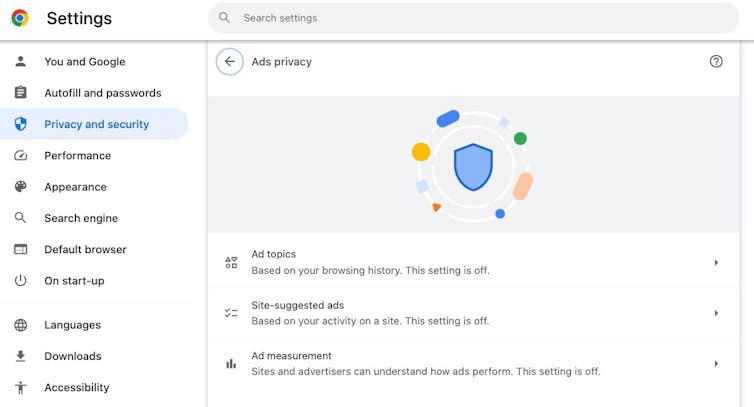
If you don’t mind some useful targeted advertising, you can leave the Chrome Privacy Sandbox settings on.
If you want to adjust these settings or switch them off, click the three dots in the upper-right corner and go to Settings > Privacy and Security > Ad privacy. It’s unclear if toggling these features off will stop Chrome from collecting these data altogether, or if it just won’t share the data with advertisers. You can find out more details about each feature on the Google Chrome Help page.
Lastly, it’s good to remember nothing truly comes for free. Software costs money to develop. If you’re not paying towards that, then it’s likely you – or your data – are the product. We need to revolutionise how we think about our own data and what value it truly holds.![]()
Erica Mealy, Lecturer in Computer Science, University of the Sunshine Coast
This article is republished from The Conversation under a Creative Commons license. Read the original article.
Pittwater-Narrabeen Parkinson’s Support Group
NSW Health: Be On The Look Out For Serious Bacterial Illnesses
Businesses Urged To Remove Unfair Contract Terms Ahead Of Law Changes
- Consider both points of view: if you think a term is necessary to protect your business’s legitimate interest, consider the term from the other party’s point of view.
- Include counter-balancing terms: check that your contract has appropriate counter-balancing terms. For example, if you consider that your business reasonably needs the ability to unilaterally change the product or service being provided under the contract, does the contract also allow your customers to exit the contract without penalty when this occurs?
- Avoid broad terms: don’t have terms that are as broad as possible. Make sure terms are only as broad as reasonably necessary to protect your business’s legitimate interests.
- Meet your obligations under the Australian Consumer Law: don’t have terms that seek to avoid your business’s obligations under the Australian Consumer Law. For example, don’t include terms that seek to limit your customers’ consumer guarantees rights, or terms that seek to disclaim any representations your business may have made outside of the contract.
- Be clear: Use clear and simple language in your contracts.
- Be transparent: ensure key terms are clearly drawn to the attention of your customers during the sign-up process, and any renewal process.
- In 2023, suppliers in the fertiliser industry agreed to amend their contracts following an ACCC investigation into unfair contract terms.
- In 2022, Fowler Homes Pty Ltd provided a court-enforceable undertaking to the ACCC, admitting that its standard home building contract contained unfair contract terms.
- In 2022, the Federal Court declared that 38 contract terms used in contracts entered into by Fujifilm Business Innovation Australia or Fujifilm Leasing Australia (together, Fuji) with many thousands of small businesses were unfair, following court action by the ACCC.
- Funeral service providers Parkside Funerals and Bowra & O’Dea each provided the ACCC with a court-enforceable undertaking, committing to remove potential unfair terms from their funeral services contracts, among other commitments.
- $50,000,000;
- three times the value of the "reasonably attributable" benefit obtained from the conduct, if the court can determine this; or
- if a court cannot determine the benefit, 30 per cent of adjusted turnover during the breach period.
- Standard form contracts made or renewed on or after 9 November 2023.
- A term of a contract that is varied or added on or after 9 November 2023.
Fairer Democratic Elections To Return For City Of Sydney
- ensure the same rules that govern voting by non-residential electors in all other LGAs in NSW will apply to the City of Sydney
- make the preparation of non-residential elector rolls much less onerous and costly and relieve the City of Sydney of a significant administrative burden
- deliver cost savings for the City of Sydney that can be redirected towards services and infrastructure for the local community
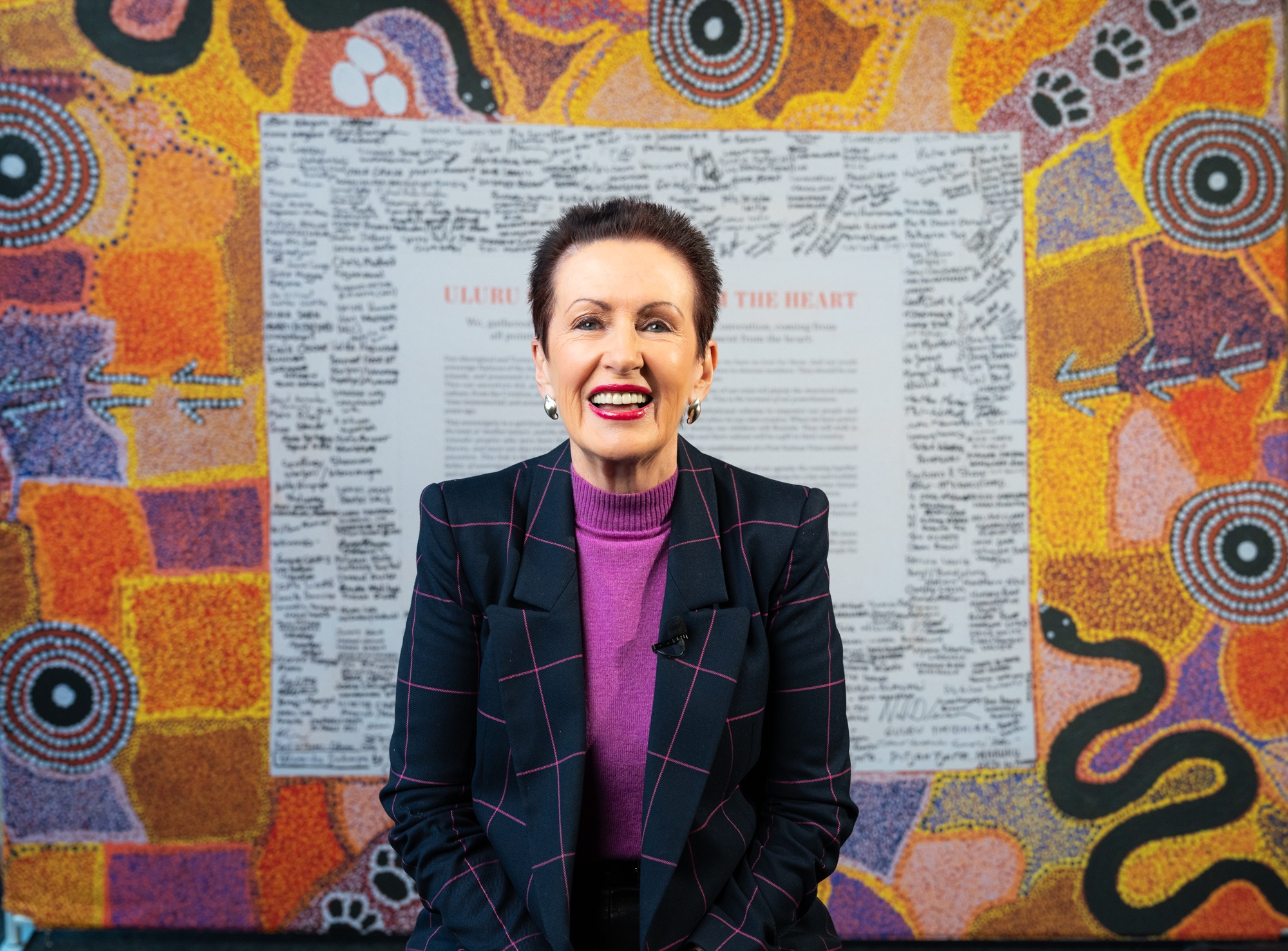
1112 Nurses And Midwives Made Permanent By Minns Labor Government
- 138.2 nurses in the Hunter New England LHD
- 119.2 nurses in South Western Sydney LHD
- 109.1 nurses in Western Sydney LHD
- 104.4 nurses in South Eastern Sydney LHD
- 99.4 nurses in Sydney LHD
- 82 nurses in Northern Sydney LHD
- 61.4 nurses in Illawarra Shoalhaven LHD
- 57.1 nurses in Central Coast LHD
- 56.1 nurses in Western NSW LHD
- 51 nurses in Northern NSW LHD
- 50 nurses in Nepean Blue Mountains LHD
- 43.3 nurses in Mid North Coast LHD
- 41.6 nurses in Murrumbidgee LHD
- 41 nurses in Children's Hospital Network
- 26.6 nurses in Southern NSW LHD
- 6.5 nurses in Far West LHD.
Healthy Lifestyle Can Help Prevent Depression -- And New Research May Explain Why
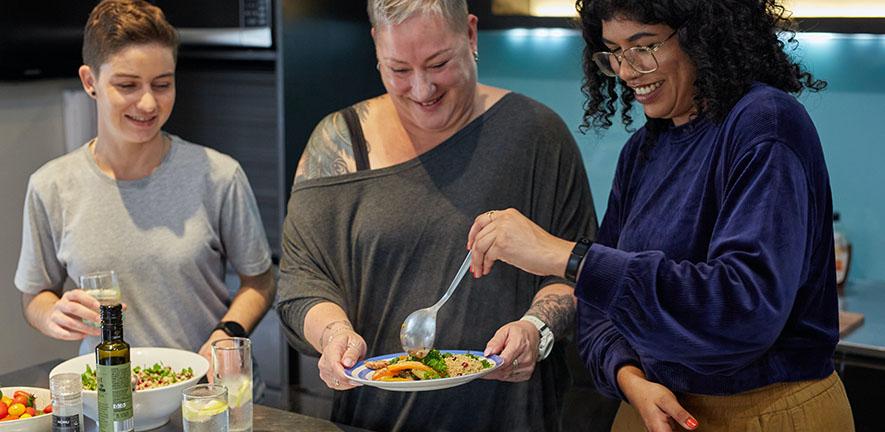 A healthy lifestyle that involves moderate alcohol consumption, a healthy diet, regular physical activity, healthy sleep and frequent social connection, while avoiding smoking and too much sedentary behaviour, reduces the risk of depression, new research has found.
A healthy lifestyle that involves moderate alcohol consumption, a healthy diet, regular physical activity, healthy sleep and frequent social connection, while avoiding smoking and too much sedentary behaviour, reduces the risk of depression, new research has found.- moderate alcohol consumption
- healthy diet
- regular physical activity
- healthy sleep
- never smoking
- low-to-moderate sedentary behaviour
- frequent social connection
Water World? Methane, Carbon Dioxide In Atmosphere Of Massive Exoplanet

New Super-Fast Flood Model Has Potentially Life-Saving Benefits For Australia
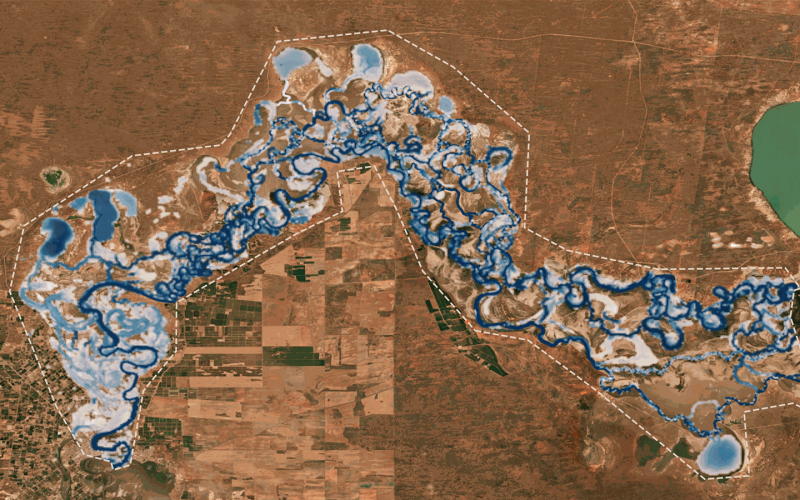
Helicopter-Based Observations Uncover Warm Ocean Water Flows Toward Totten Ice Shelf In Southeast Antarctica
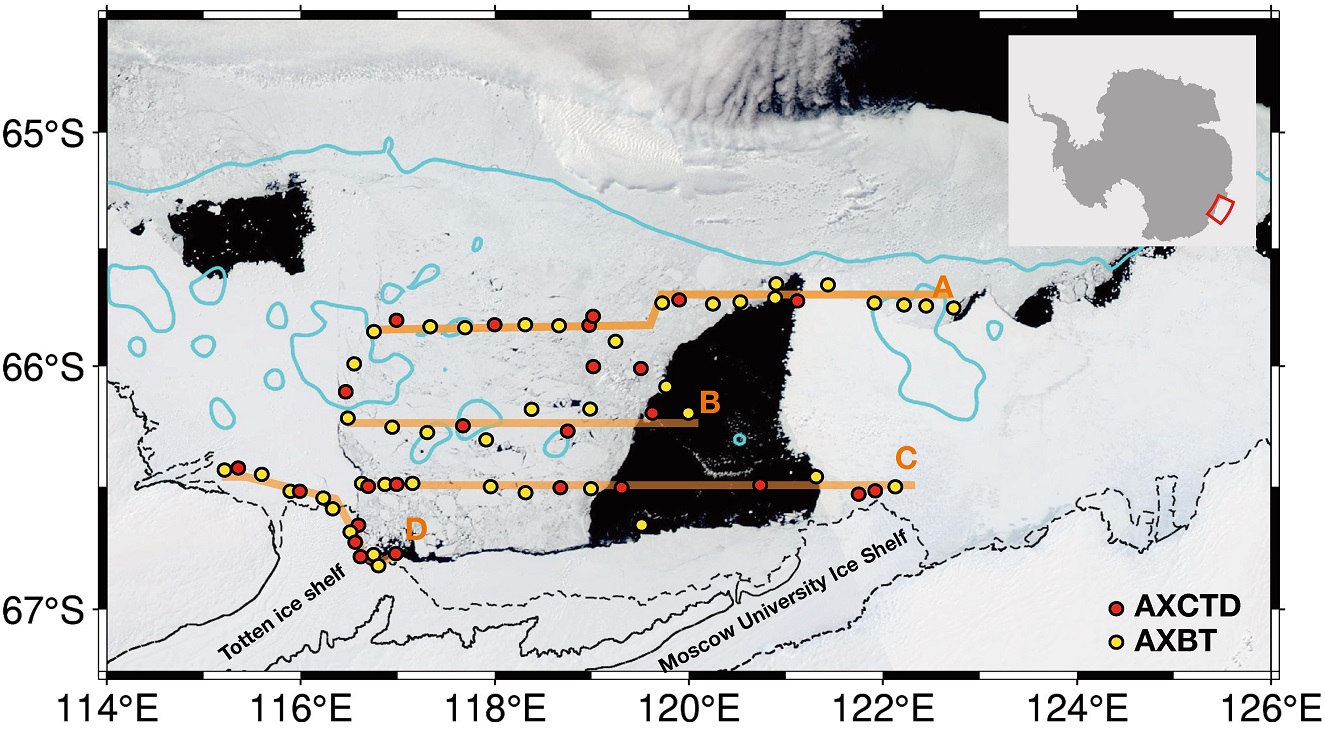
Study Reveals Reductions In Breast Cancer Screening Uptake During COVID-19 Pandemic
Could my child have low iron? And what are my options if they do?
Yianna Zhang, The University of Melbourne; Amanda Patterson, University of Newcastle, and Ken Ng, The University of MelbourneAround 75% of infants aged six to 12 months and 25% of toddlers aged one to two years in Australia don’t get the recommended dietary intake of iron.
Despite their small size, weaning infants and children require similar amounts of iron to adults. The iron is crucial for supporting their rapid growth in blood and muscles, immunity, brain development and learning.
Untreated iron deficiency can progress to anaemia – severe iron deficiency where there are insufficient healthy red blood cells to carry oxygen around the body. Alarmingly, anaemia affects around 8% of Australian children under five, and if untreated, can be associated with developmental setbacks and later cognitive deficits.
How Do I Know If My Kids Have Iron Deficiency?
Iron deficiency in children is often associated with vague or no symptoms, especially if it has not progressed to anaemia.
Symptoms can include fatigue, difficulty concentrating, poor behaviour, frequent infections, and pica (eating non-food substances such as paper, clay or soil).
Diagnosis typically involves a blood test that screens for iron markers such as ferritin, a protein that stores iron. Doctors often recommend these tests for people who are at high risk, detailed in the figure below.
What Are The First Options For Treatment?
When iron deficiency and anaemia are caused by a lack of dietary iron, both can often be effectively addressed through changes to the diet and oral iron supplements.
The Royal Children’s Hospital in Melbourne recommends boosting intake of iron-rich foods such as meat, fish, eggs, leafy greens and legumes, and drinking less than 500mL (about two cups) of cow’s milk per day. This is because cow’s milk has been associated with reduced iron stores in young children.
Doctors might also prescribe oral iron supplements. A course of liquid or tablets would usually be recommended for a minimum of three months , during which follow-up blood tests can show how well the child is responding to the supplementation.
Existing evidence suggests supplements are a more effective way to replenish iron stores than dietary changes alone, and ferrous sulfate is the most effective iron supplement for young children.
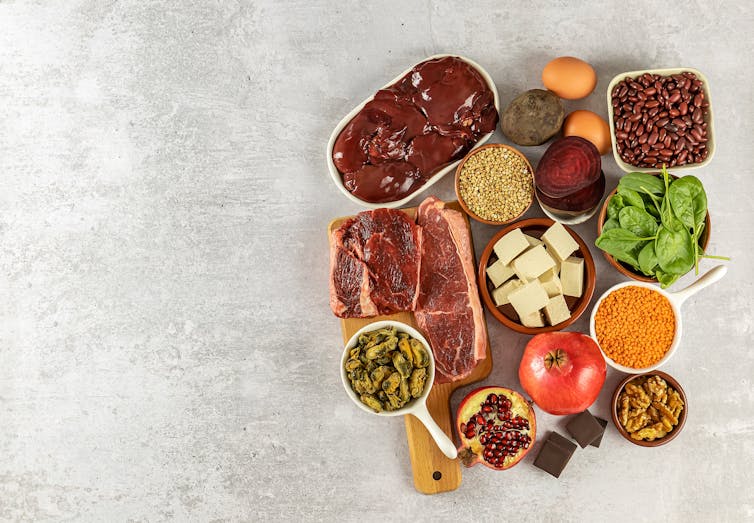
Navigating The Side Effects
Iron supplements are known to have some nasty side effects including constipation, nausea, diarrhoea, dark stools, and stained teeth. This may make compliance challenging, especially for young children. The approaches to alleviate side effects vary depending on the child.
The doctor may recommend alternative supplements as some may be better tolerated than others. Another option is to adjust the dosage, with lower dose supplements or taking it every other day.
Consuming iron supplements with food or immediately after eating can also lessen side effects. However this may result in reduced absorption, and should be discussed with your doctor.
For cases where iron supplements don’t appear to be working or where compliance is an issue, iron infusions may be prescribed by your doctor. These involve injecting iron over multiple visits at a hospital and/or specialist clinic, with each session potentially lasting an hour or more.
How Can I Prevent Iron Deficiency In My Kids?
To prevent iron deficiency, it’s important to keep an eye on your child’s iron intake, and the factors that may influence their absorption.
For example, drinks which contain tannins (tea, coffee, chocolate drinks) may inhibit iron absorption. But vitamin C and organic acids from fruits and vegetables, as well as high-quality proteins such as those found in meat and fish, can promote absorption.
From infancy, following the national feeding guidelines will help to support your child’s iron status. This includes introducing iron-rich solid foods from around six months of age for healthy breastfed infants to replenish their iron stores from birth.
Around six months is also the prime time for introducing foods to minimise risk of food allergies, including to iron-rich foods such as seafood and nut butters.
From 12 months onwards, children’s diets should align with the Australian Dietary Guidelines, emphasising a balanced, nutritious diet encompassing a range of foods. Diets following this pattern should deliver ample iron from meats, breads and cereals, as well as iron absorption promotors such as oranges, capsicum and other fresh fruits and vegetables?.
In cases where the child is a picky eater, or where access to a diversity of foods is limited, look for fortified iron options such as in bread, drinks (for example juice for kids over 12 months, and Milo for older kids), and breakfast cereals.
If your child is diagnosed with iron deficiency, remember each path to recovery is unique. Consultation with a GP or dietitian can help tailor solutions catering to their specific needs.![]()
Yianna Zhang, Sessional tutor, The University of Melbourne; Amanda Patterson, Senior Lecturer in the School of Health Sciences, University of Newcastle, and Ken Ng, Senior Lecturer & Course Coordinator (Master of Food Science), The University of Melbourne
This article is republished from The Conversation under a Creative Commons license. Read the original article.
Disclaimer: These articles are not intended to provide medical advice, diagnosis or treatment. Views expressed here do not necessarily reflect those of Pittwater Online News or its staff.